Central Asia Part 1: From Almaty to the Kyrgyz border
Kazakhstan: Heatwave and impressive rock formations (49)
After a month in Tbilisi (check out our blog about one of our favorite cities: here) the next chapter of our journey was supposed to start in mid-July, but finally COVID-19 caught up with us after almost two years on the road and we had to reschedule our flight for 10 days. Was this already a sign for everything that would go wrong the next months? Who knows. After our recovery we finally continued our trip to the region of fermented mare's milk, creative headwear, flashing gold teeth and scratchy toilet paper. You guessed it, we're traveling to Central Asia. Since overland travel to the Stans is impossible due to closed borders in Azerbaijan and Turkmenistan, this means we have to fly again. We decide to take a direct flight from Tbilisi to Almaty in Kazakhstan and from there we would cycle via Kyrgyzstan to Uzbekistan. The Pamir Highway in Tajikistan is still in the back of our minds, but currently it rather looks like this won’t be possible this year. Therefore, we are planning on taking some time to discover beautiful Kyrgyzstan instead.
Compared to the past, the countries of Central Asia are much easier to travel to today and except for Turkmenistan, something like the black sheep of the Stans, visas are no longer required. Thus, there is actually not much in the way of exploring this region full of hospitality and untouched natural beauty, and more and more individual travelers are discovering the lonely hiking trails of Kyrgyzstan, the unrivalled mountain scenery of the Pamirs in Tajikistan and the blue-domed cities of Uzbekistan. But beyond Uzbekistan’s Silk Road cities, mass tourism has yet to make any inroads in Central Asia and you still feel like an explorer in this region of the world.
But Kazakhstan in particular, the ninth largest country in the world, is still a white spot on the map for many, apart from what has been falsely put out into the world by comedian Sacha Baron Cohen's movie Borat. The country, rich in oil and natural resources, is huge and, as is often the case in Central Asia, supplies a dose of the downright odd with underground mosques, a hypermodern custom-built capital with glittering facades, rusting Soviet ships on the dwindling Aral Sea, former Soviet labour camps or underground bunkers and an Atomic Lake. Kazakhstan, with its 18 million inhabitants, is about the size of Western Europe (!) and consists mainly of endless steppes as well as desert and mountain landscapes. It’s another country full of contradictions, you can find expensive labels in the cities and in the villages the water is still fetched from the community well. We limit ourselves to only a small corner of the country and visit the southeast of the country, one of Kazakhstan’s most varied regions with landscapes from singing dunes to dense forests with mountain lakes.
Pop quiz: What’s the current name of Kazakhstan’s capital?
The city of Almaty (population nearly 2 million) is the cultural hub of the country and is ideally located with pleasant temperatures and surrounded by beautiful natural landscapes. However, in 1997 it was decided to relocate the capital to relative isolation in the northern steppes to windswept Aqmola. Soon after, the city was renamed Astana - the Kazakh word for capital - and then it was renamed Nur-Sultan in honour of the authoritarian ruling President Nursultan Nazarbayev. After (too) many decades of ruling the country, he was overthrown by angry demonstrators in January 22 with the words "Old man, go away!" and now the capital is called Astana again. It's all very simple, isn't it?
First impressions of Central Asia in cosmopolitan Almaty
We don’t arrive in Astana, but 1000 km further south in Almaty, one of the most cosmopolitan and pleasant cities in Central Asia. The culture shock is thus very limited and we encounter the "standard set" of many post-Soviet states, just as we did in the Caucasus: Wide streets, huge squares with ostentatious representative buildings and plenty of space for military parades, statues (99% of them representing men), generously laid out green areas with amusement parks for the children and, of course, a hill with a Ferris wheel can’t be missing either.
We feel quite at home after the Caucasus, only some things are surprising to us such as the density of elegant and expensive restaurants. Probably nowhere in Central Asia can you dine as exquisitely as in Almaty and there are also a variety of international restaurants and we discover Korean cuisine here and decide after the first few bites that we probably have to include South Korea in our trip. But we are even more surprised that the restaurants are well attended by the locals and not by the few tourists, probably thanks to the petrodollar boom of the country.
So let’s have a quick look at Kazakhstan’s population to start with. Besides the Kazakhs, many Russians (almost 20%) live in Kazakhstan, followed by Uzbeks, Uyghurs, Ukrainians, Tatars, Germans, Turks, Polish, Koreans and Azerbaijanis. One reason for this mixture is the deportation of entire populations to Siberia and Kazakhstan initiated by Stalin, which resulted in the deaths of thousands of people. Another chapter of world history that we never learned about in school. Sometimes we think there is so much to know and learn that one lifetime is never enough for it. But let's get back to the more current events, as some burned buildings in Almaty still bear witness to the violent protests in Kazakhstan in January 22. A new government has been installed that is attempting a balancing act between economic relations with China, Russia and Europe, which Kazakhstan seems to be doing well so far. It was also quite remarkable that the new Kazakh President Tokayev clearly signaled in Putin's presence that he doesn’t plan to dance to Putin's tune, a novelty in the Central Asian states. Many Kazakhs are rediscovering their cultural heritage, and Kazakh language courses are gaining popularity and it’s being spoken again instead of Russian.
To us, Almaty seems very tidy and the elegantly dressed locals very friendly and open-minded. It’s a pleasant arrival in Central Asia, although not particularly exciting. We spend two days exploring the city during a summer heatwave and visit the country's most famous cathedral, the Museum of Folk Music Instruments and take the cable car up to Kök Töbe, the hill with the Ferris wheel. From here you have a good view over the leafy city and the surrounding mountains. On the spur of the moment, we also decided to take a speedy ride down on a rickety bobsled run.
A little Central Asian feeling comes up at the Green Market with its entire row dedicated to horsemeat, but even here everything is tidier and less chaotic than expected. We are very enthusiastic about the large selection of fresh, healthy Korean salads and for the first time in two years we can try tofu again. If only it would continue like this in Central Asia, but we know that Almaty is definitely an exception. So we enjoy again all the great food offers, buy enough food for the next stretch and then we start cycling towards Kyrgyzstan at pleasant 40° C.
Cycling at 40° C through the southeast of Kazakhstan
It’s unbearably hot and we are glad, that our route leads along flat fields and many streams and rivers. We take every opportunity to cool down and we’re not the only ones. An ice-cold natural pool seems to be very popular with the locals and a few girls even get swimming lessons. Never before have we bathed so often in one day as in these days in Kazakhstan and we are happy to be able to pitch our tent every night next to the water. Between Almaty and our next destination Karakol in Kyrgyzstan there are only very few towns and shopping possibilities and once we even take a detour of 20 km just to be able to buy groceries. Mostly we cycle on empty roads and the few encounters with the locals are extremely positive and we meet the most different people like the farmer who passes us a cold beer early in the morning or the Muslim woman with headscarf who just returns from windsurfing in Kyrgyzstan. Throwing prejudices overboard is incredibly easy on this trip anyway.
Unfortunately, our Central Asian streak of bad luck starts pretty soon after leaving Almaty. First, I lose my beloved sunglasses in a fast-flowing stream and shortly afterwards our Sony camera, which we repaired in Tehran, definitely breaks. Of course, this has to happen right in the middle of nowhere. In Tbilisi we would have had so much time to repair the camera or order a replacement. But now we have 2-3 months of natural landscapes and cycling ahead of us and we won't get to a bigger city for a longer time. The thought of not capturing all the beautiful mountain landscapes with the good camera hurts a bit, but that's part of traveling.
If we were surprisingly spared from bad luck in the past, now in Central Asia many things wouldn’t go as planned and that was just the beginning. As so often on this trip, every cloud has a silver lining. In this case our luck is that Lukas from Sense of Travel is currently traveling with a tour group in Kyrgyzstan and we’ll meet him and he agreed to bring us some things from Switzerland. We quickly decided to order a new camera, but that’s easier said than done. There’s not much internet connection in this corner of the world and it takes quite some nerves until we can make the payment and order online. Eventually it’s done and we can concentrate again on the incredible scenery surrounding us.
Camping in Kazakhstan’s Grand Canyon
Our absolute highlight in Kazakhstan is Charyn Canyon, also known as the "Kazakh Grand Canyon." The canyon's history dates back 12 million years, when the river slowly eroded a gorge into the rock. The oldest layers at the bottom of the canyon are made of volcanic lava rock and over the years, wind, water and sun have caused varied landscapes. The gorge is 154 kilometers long and winds through the northern mountain range of the Tien Shan, reaching a depth of up to 300 meters in some places. The most impressive section is also called "Valley of the Castles” with spectacular red rock formations.
We’re cycling down a steep path and along a dirt road to the fast-flowing, glacial Charyn River. We’ll have to cycle back the same way and to delay the effort a bit, we decide to spend 2 nights camping in the canyon. We find a place in the shade, there’s drinking water and a toilet hut and so we’ve got everything to spend a full day here. It’s still unbearably hot and we spend the entire day getting in and out of the cold river. In the morning and evening hours we’re walking through the canyon which shimmers in the most beautiful shades of red. It really looks like Utah or Arizona, an area I always wanted to visit. We’re impressed by this canyon landscape in Kazakhstan, which still seems to be largely unknown to foreign visitors.
Less than 25 km from the "Valley of the Castles" we meet the Charyn River a second time. Even though it’s still early in the day, we decide to spend the afternoon at the river and camp here. A nice Kazakh family joins us, they’re all traveling with a campervan and have taken way too much food, which they share with us. We’re very grateful for all the generous locals we meet as there’s not much infrastructure in this region and there aren’t many possibilities to buy groceries between Almaty and Kegen.
The unknown Kazakhstan has really surprised us and we’d like to stay longer and also visit the sand dunes in the Altyn-Emel National Park and the mountain lakes. But we’ll meet Lukas soon in Karakol and therefore time is a bit short and we head for the Karkara border near Kegen. The closer we get to Kyrgyzstan, the more the landscape changes. The dry canyon landscape turns into a green steppe with rivers. The border crossing in this remote corner is only open during the summer months and has actual opening hours and closes after 6 P.M. We join a longer line of cars, but are called to the front and can pass the border relatively quickly without a longer luggage check.
And so, we’re now standing there on a dirt road in the middle of nowhere, looking at herds of horses and yurts dotting the landscape. We’re in Kyrgyzstan, our 17th country of the trip and exactly two years after we left our hometown Baden. We’re excited and full of anticipation for the next country. We’ll be cycling through unspoiled mountain scenery and spend our first night in a yurt, but more about that in our next blog.

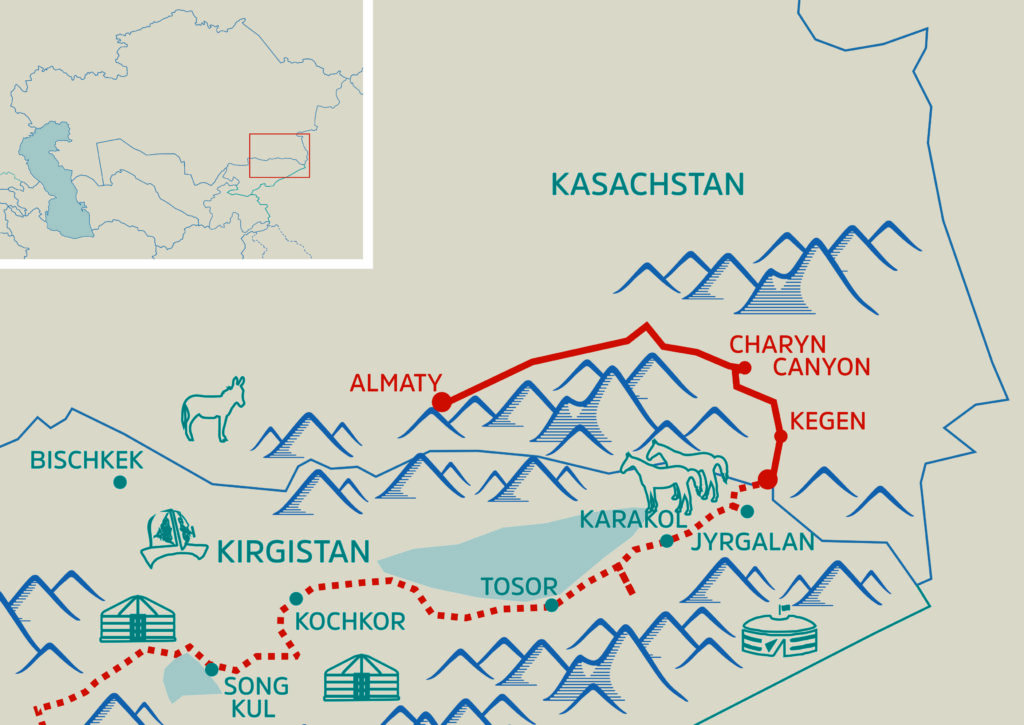

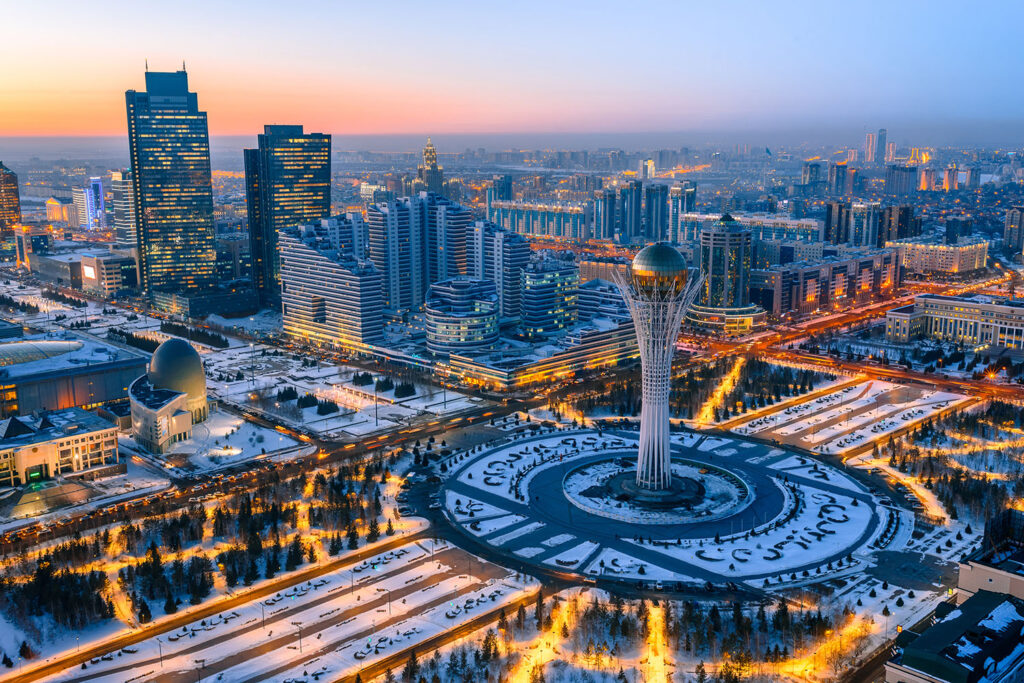
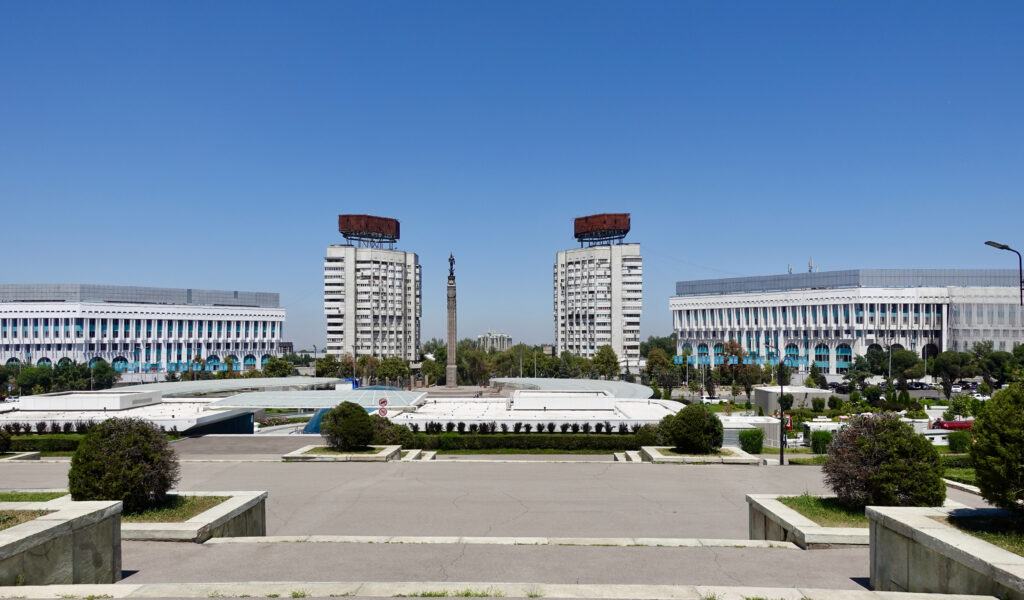
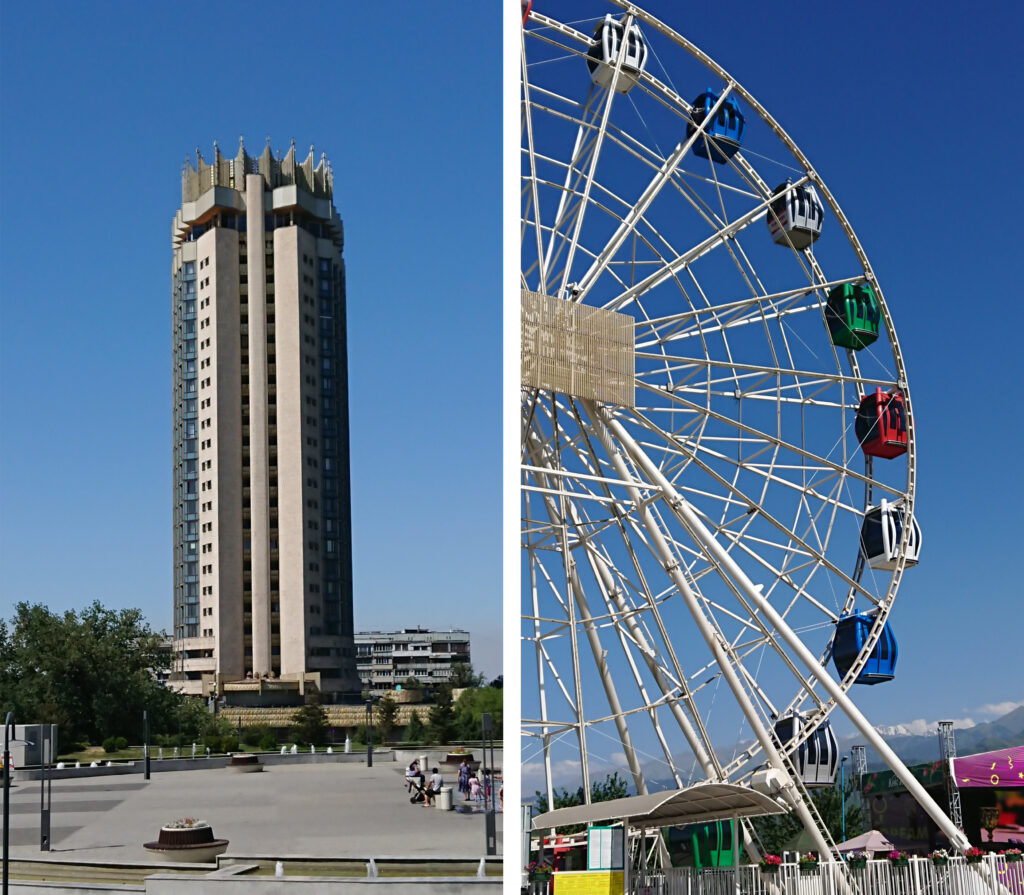
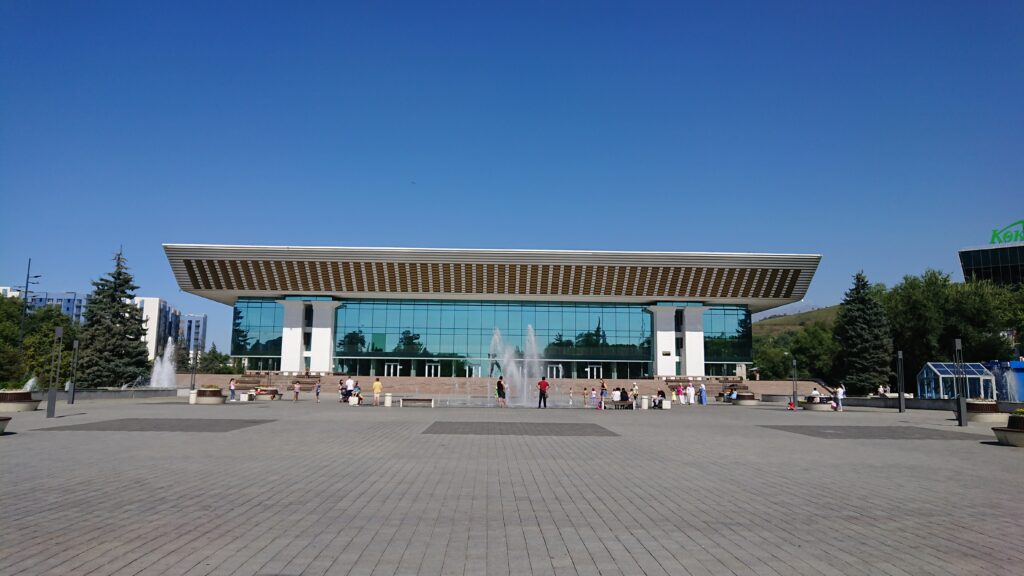



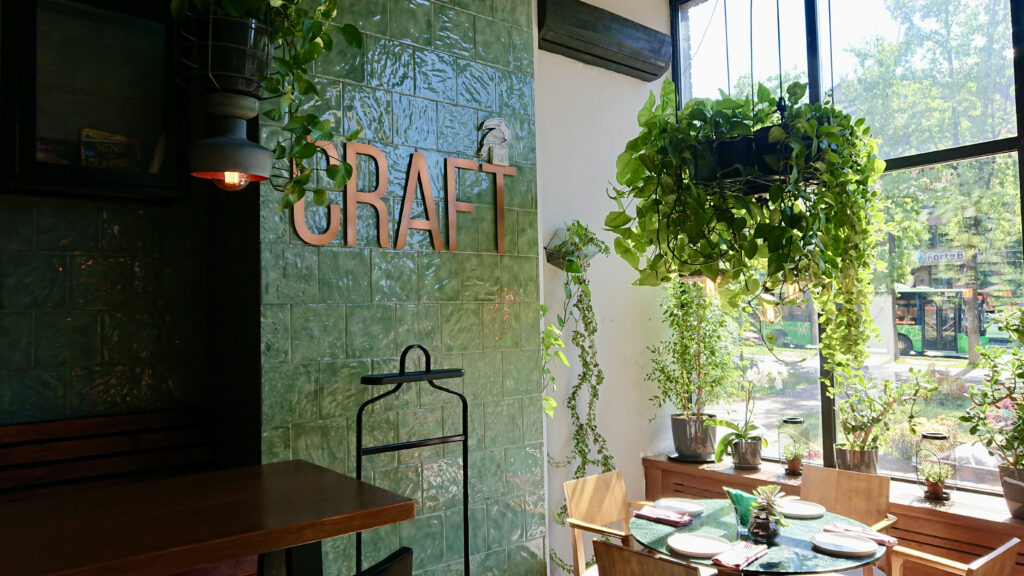
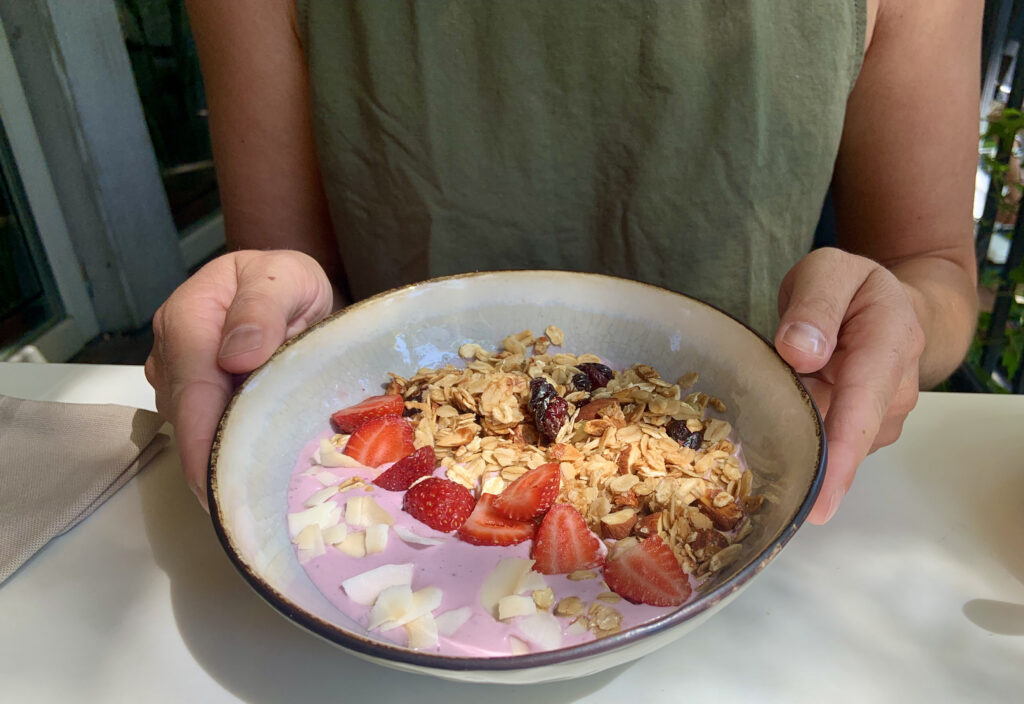
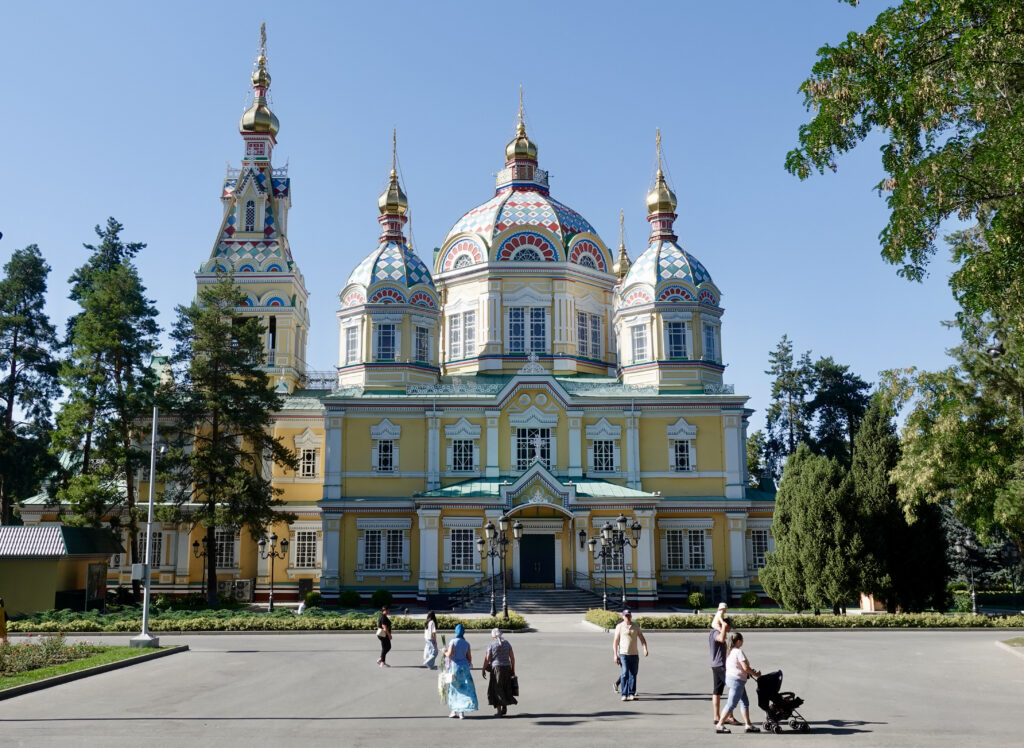
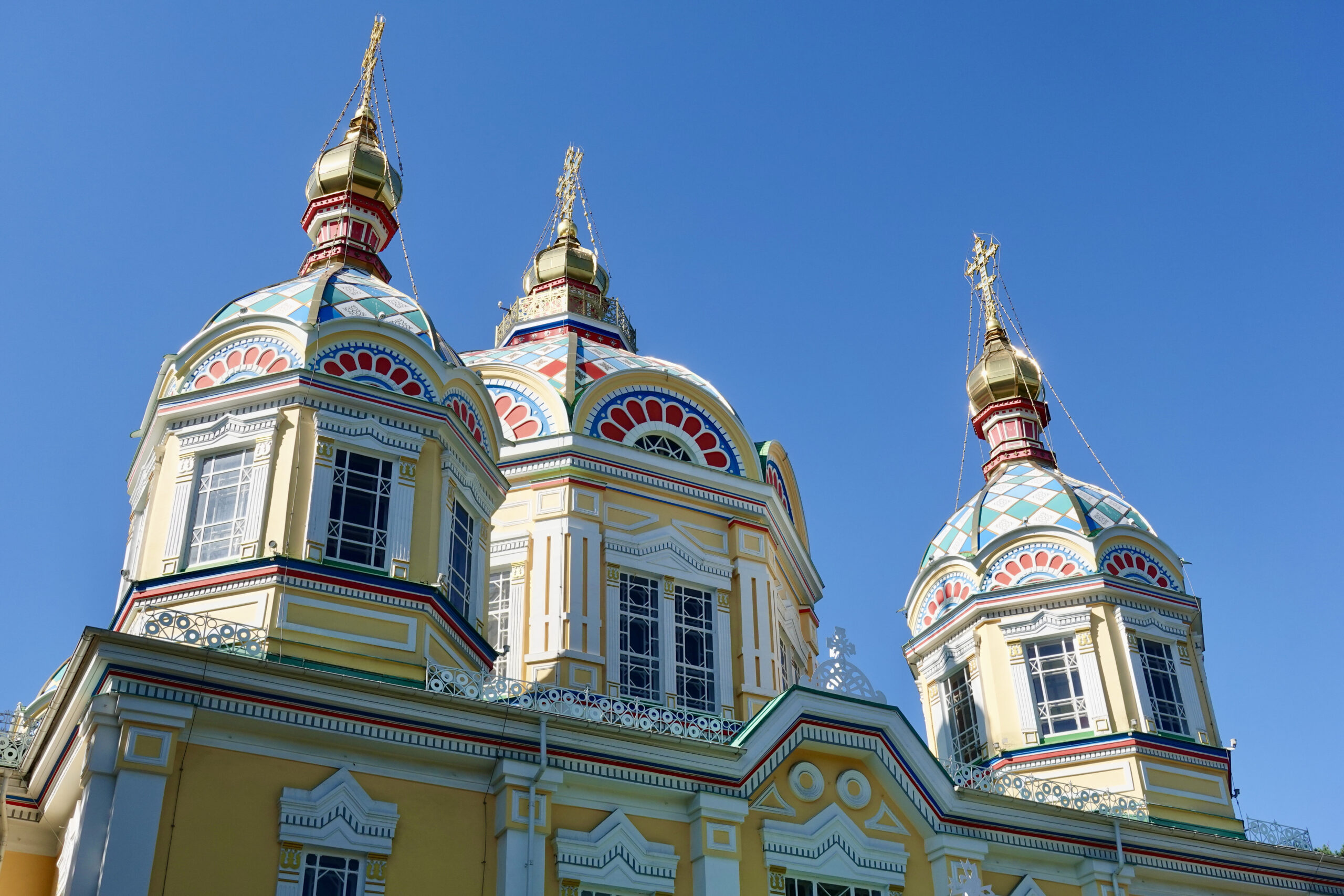
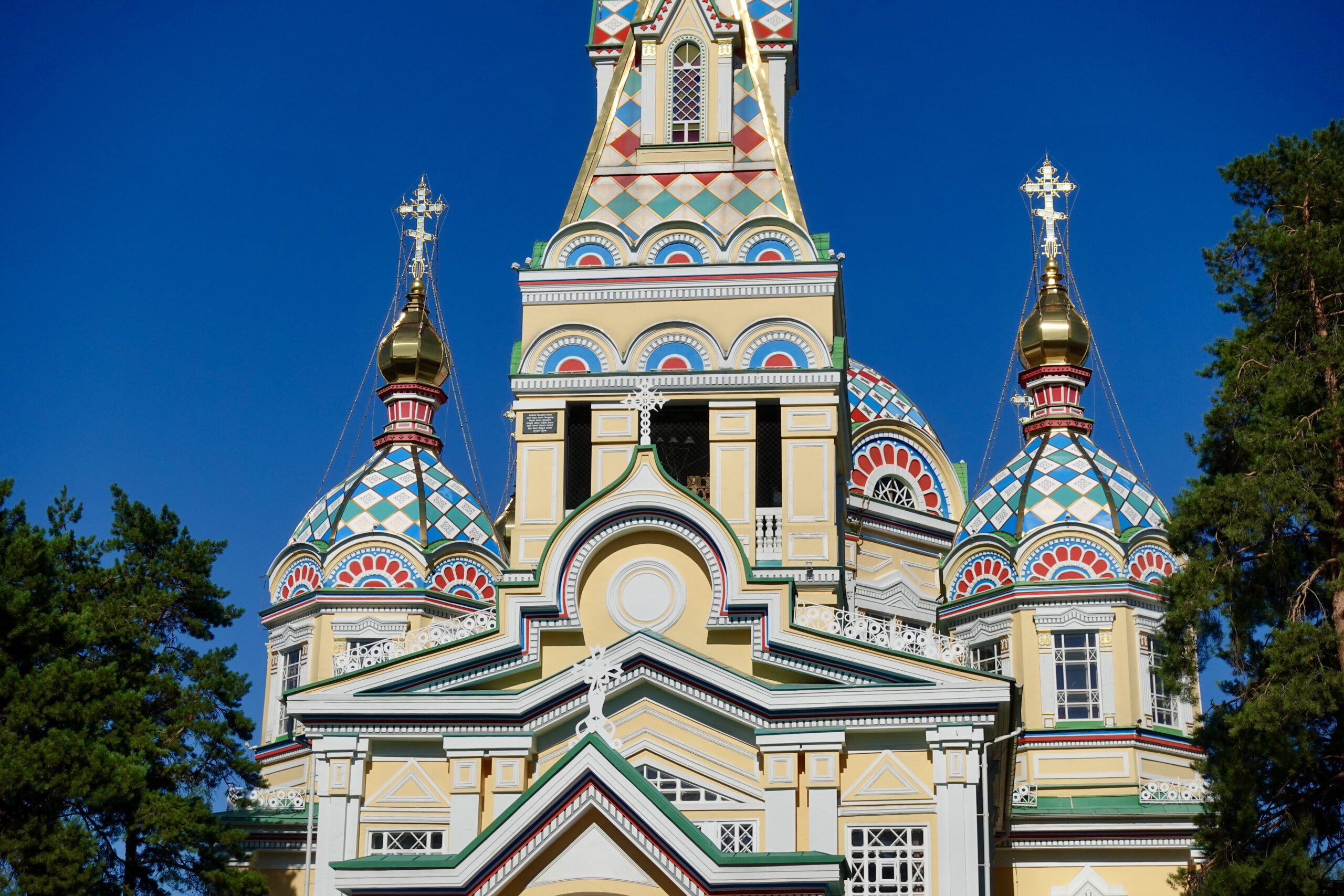


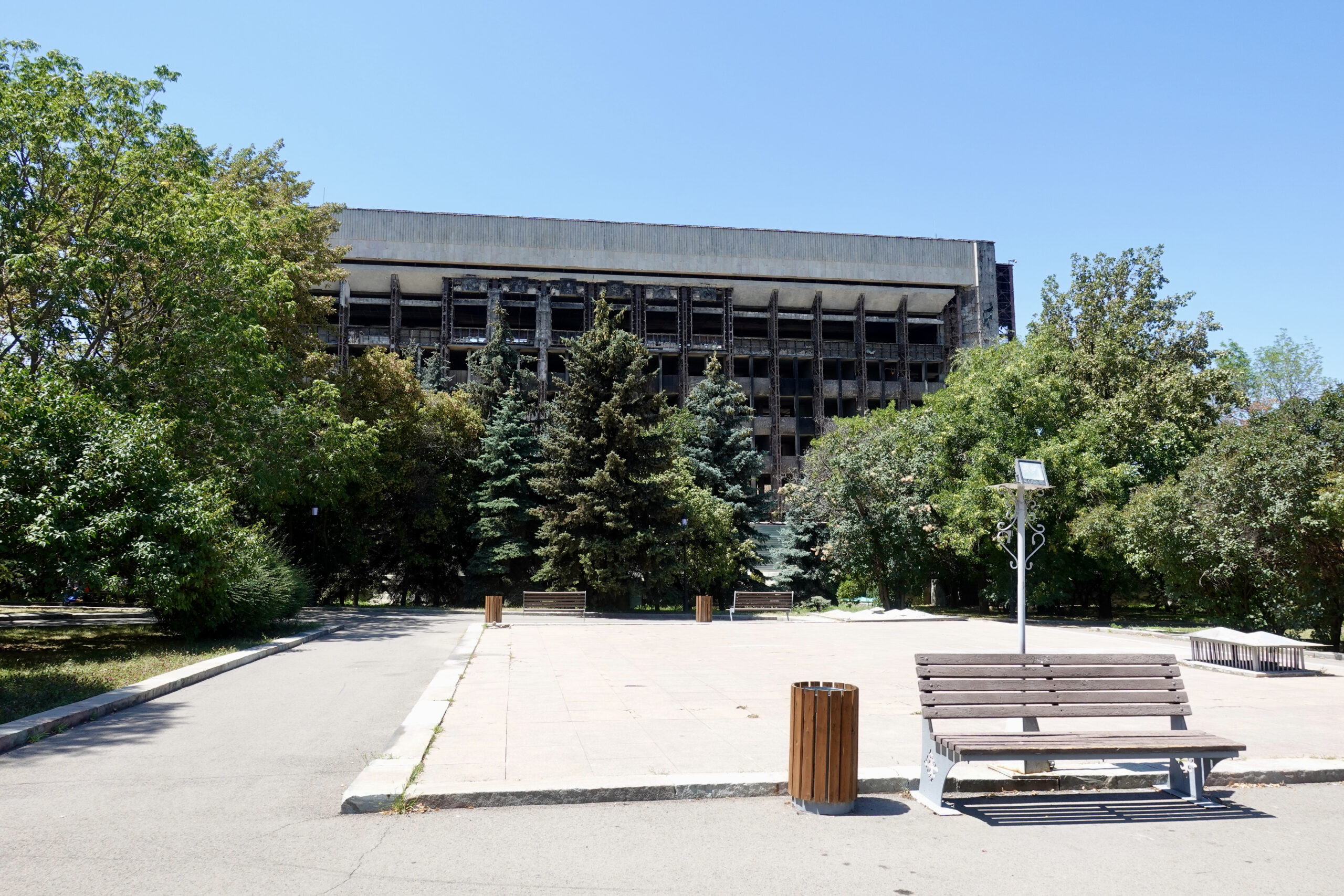
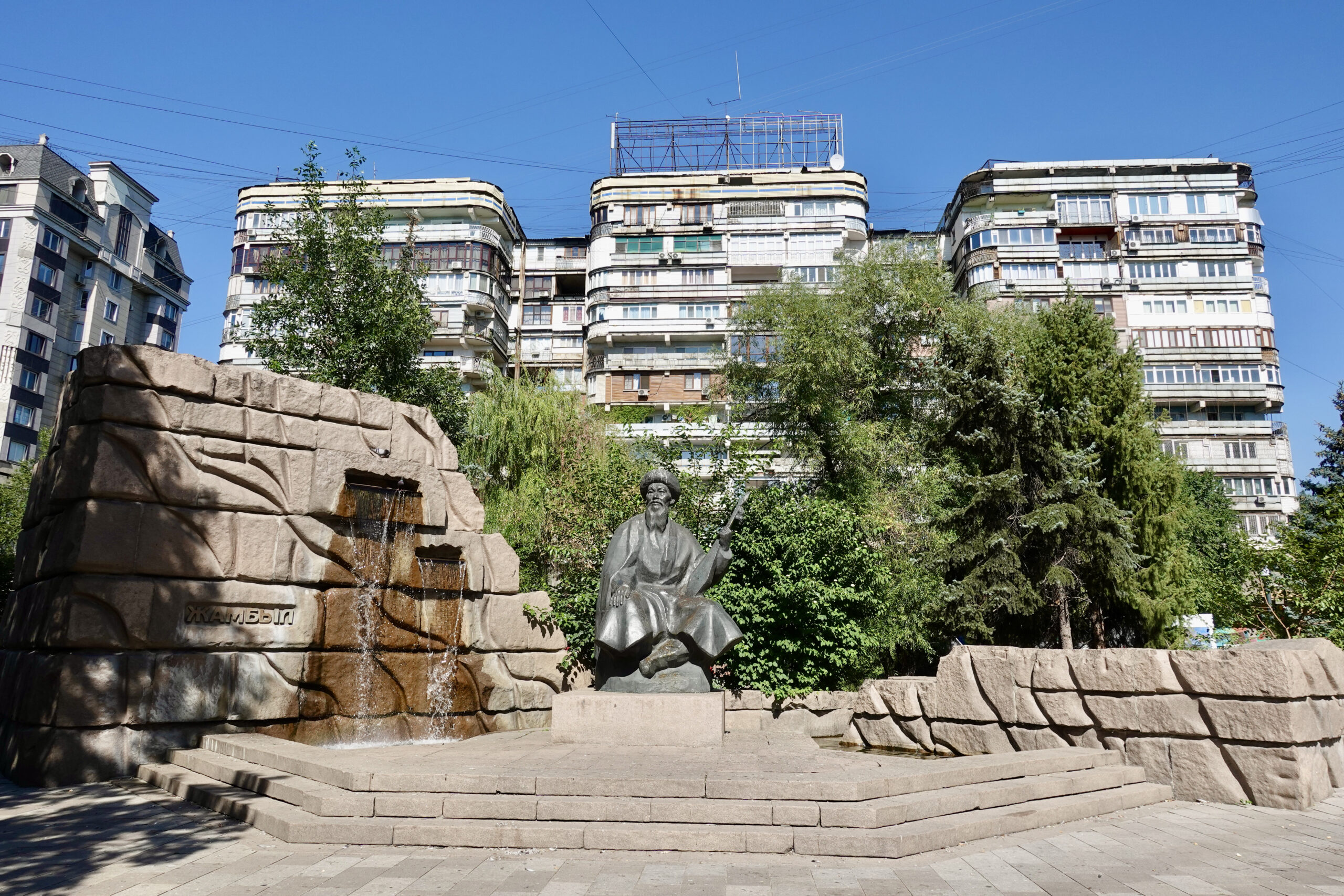

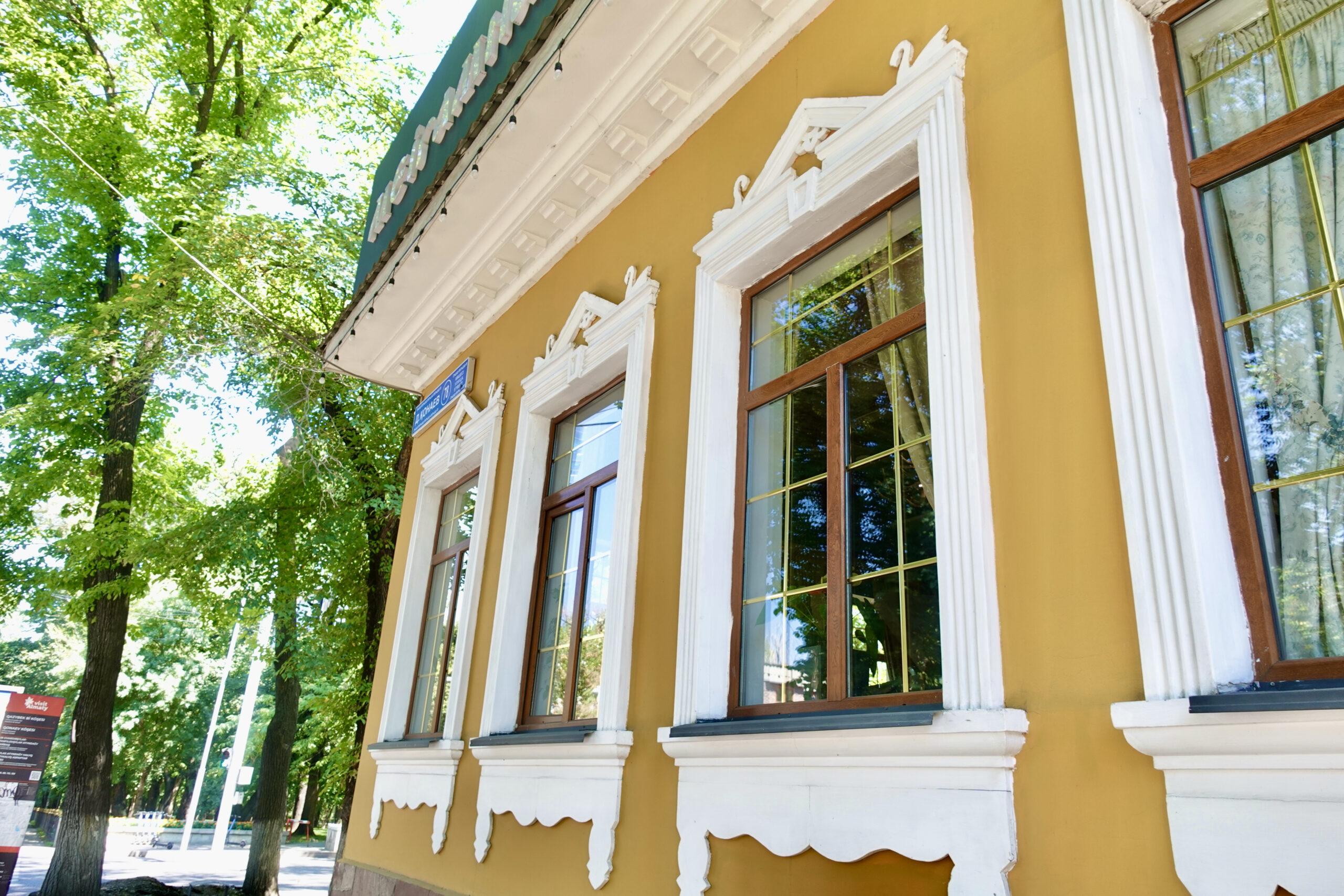
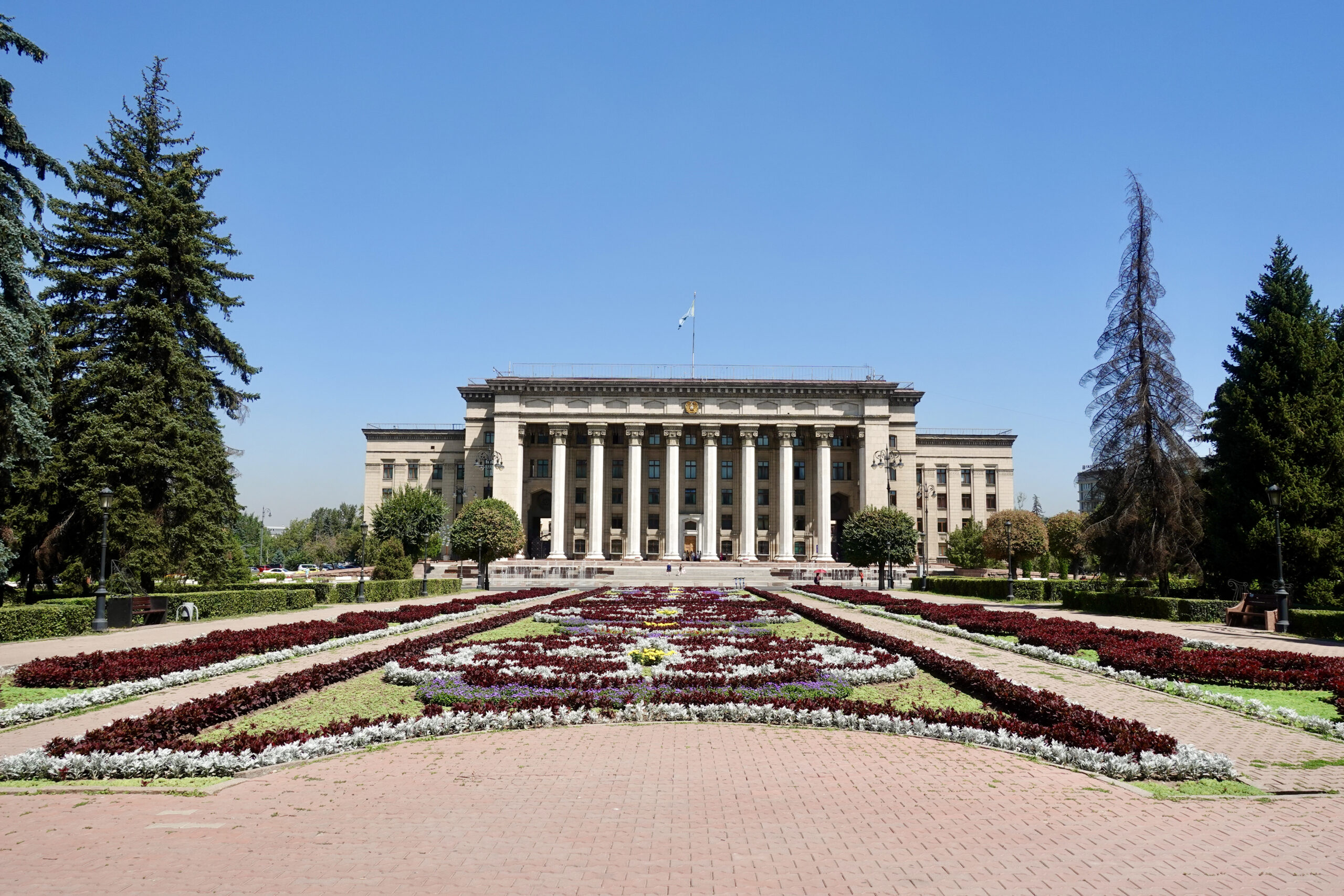
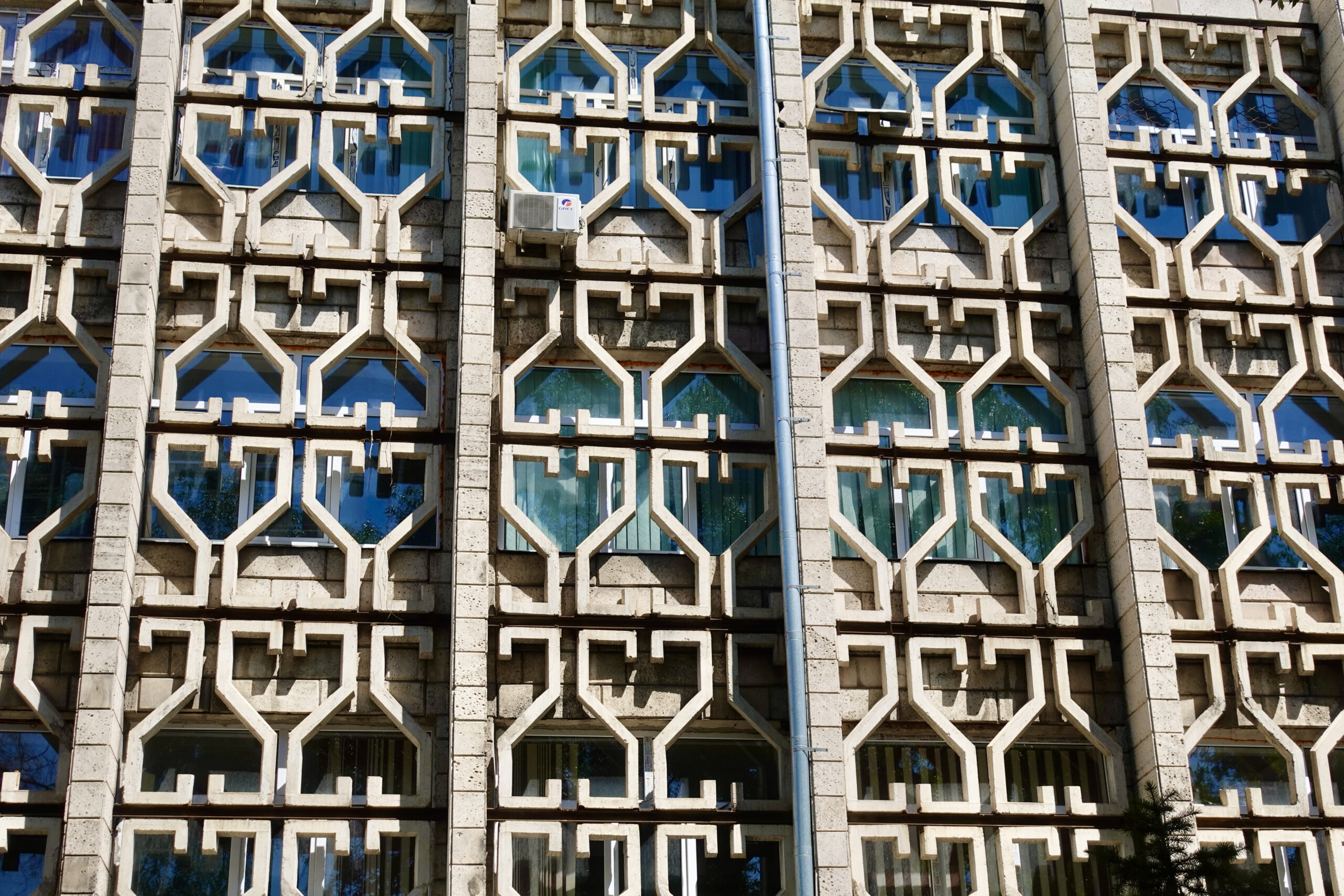
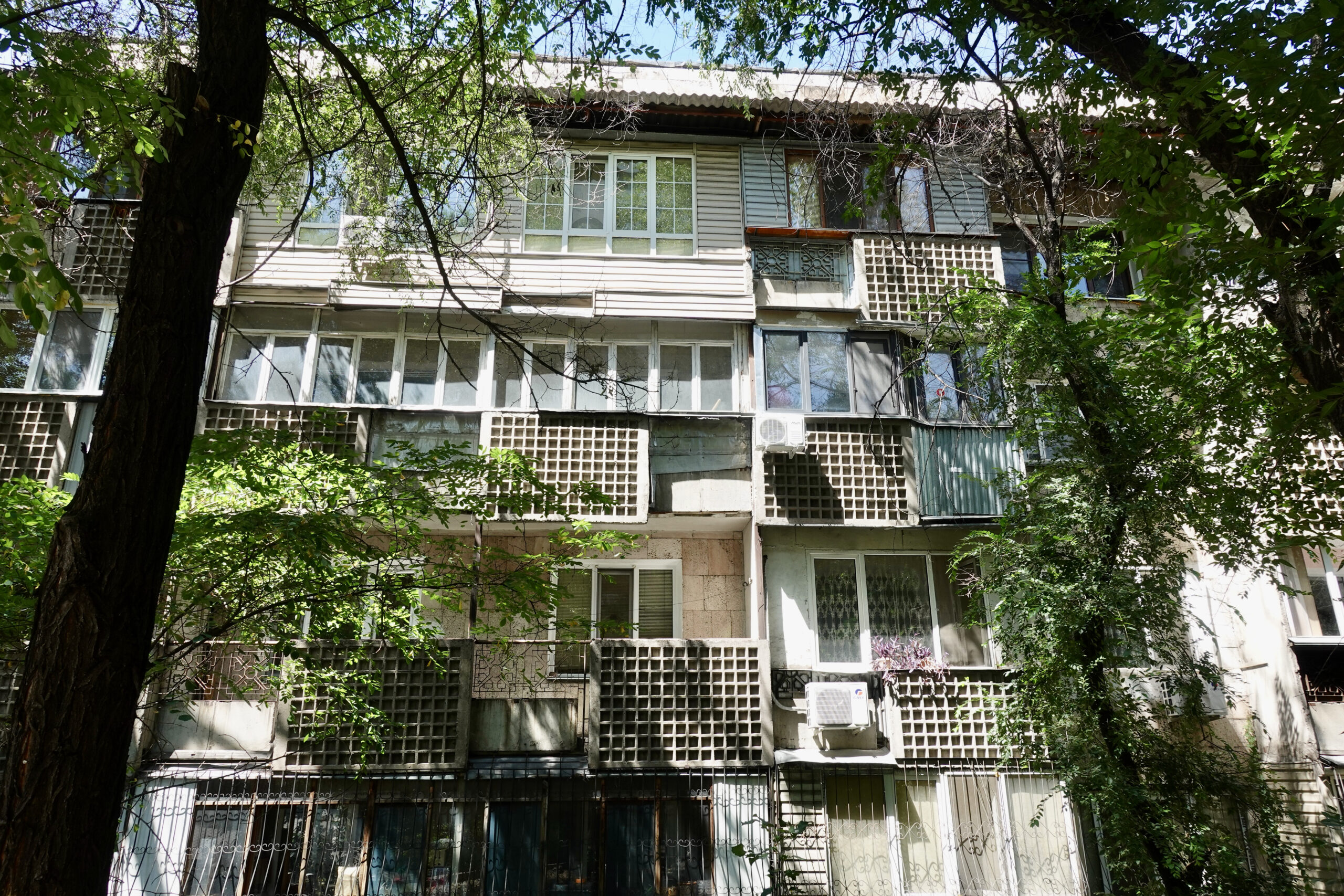

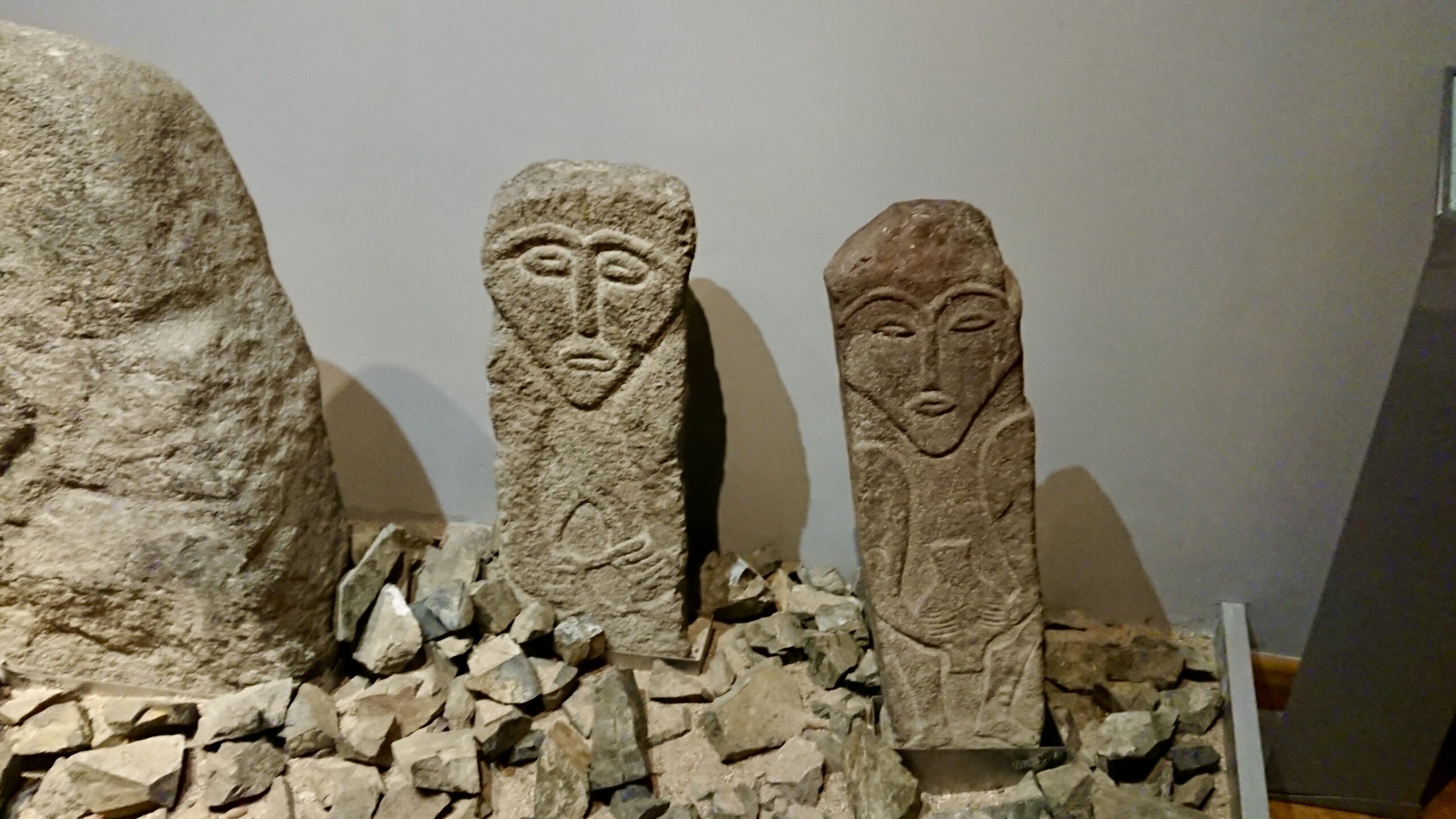
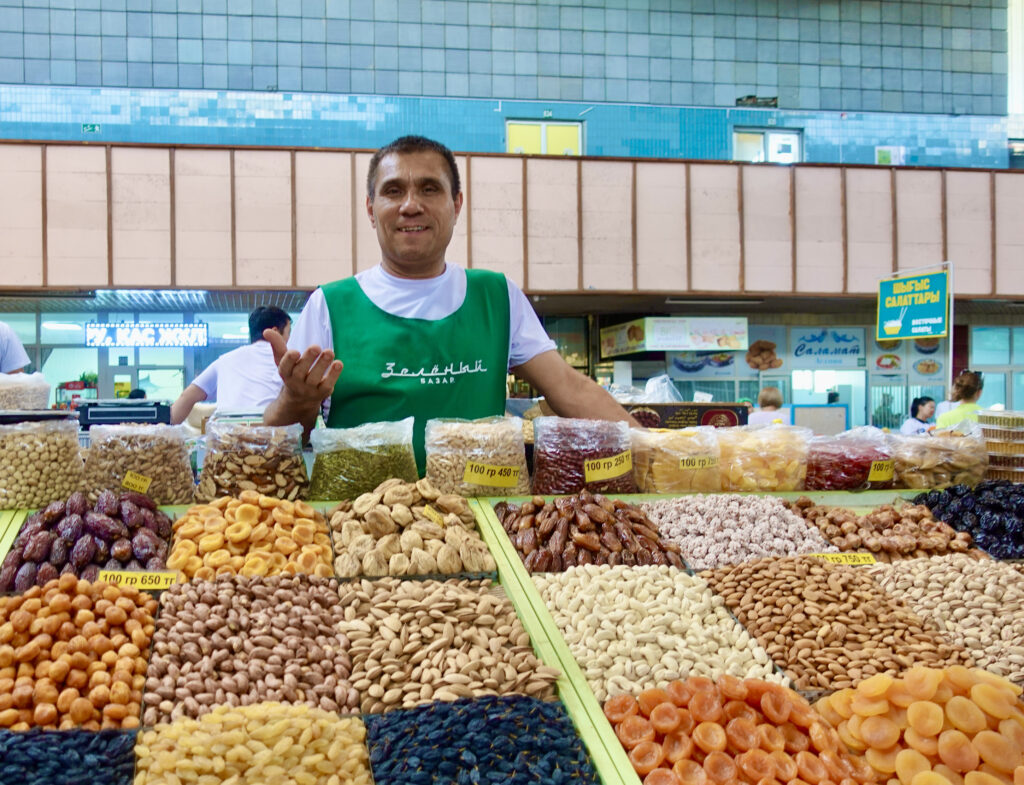
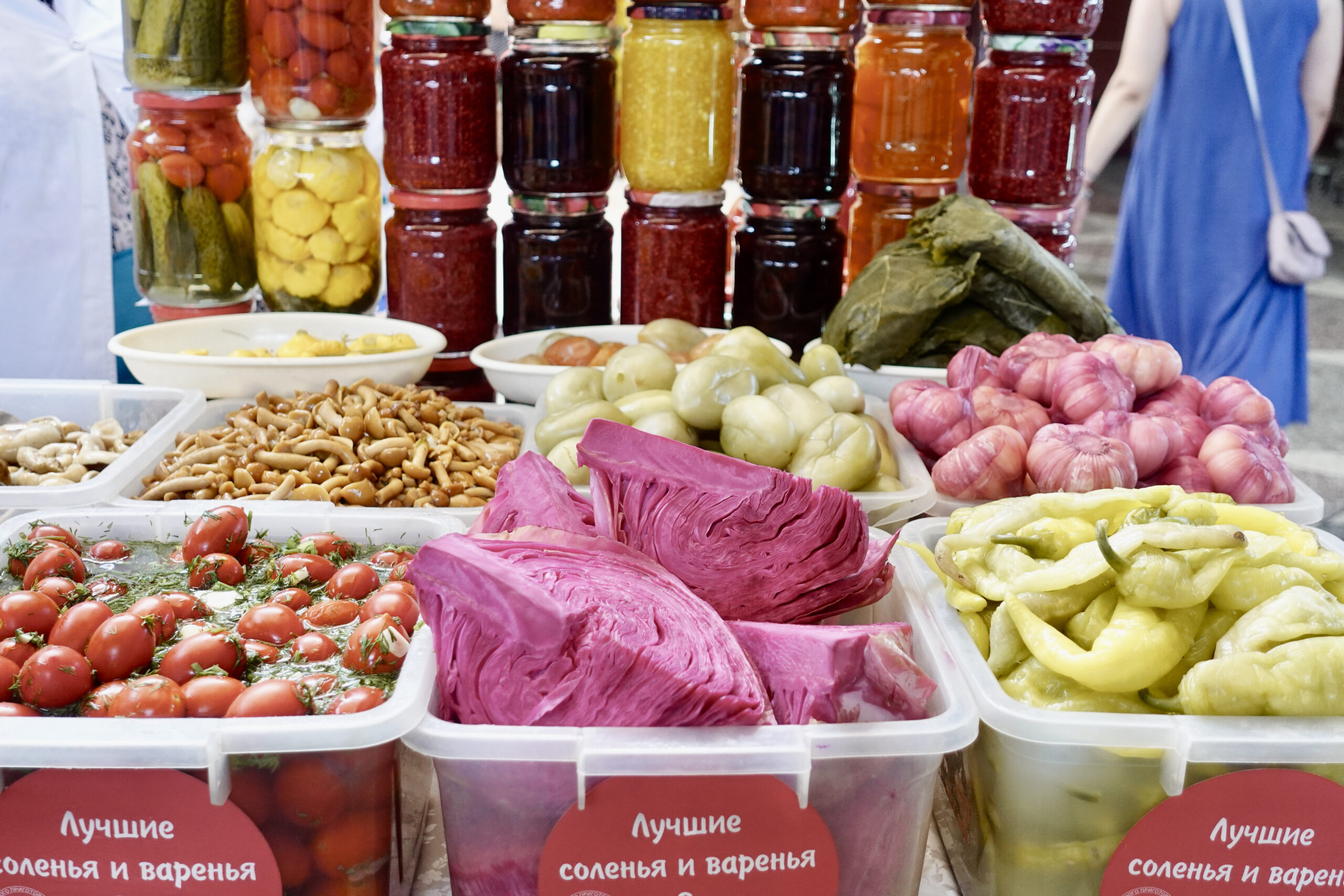

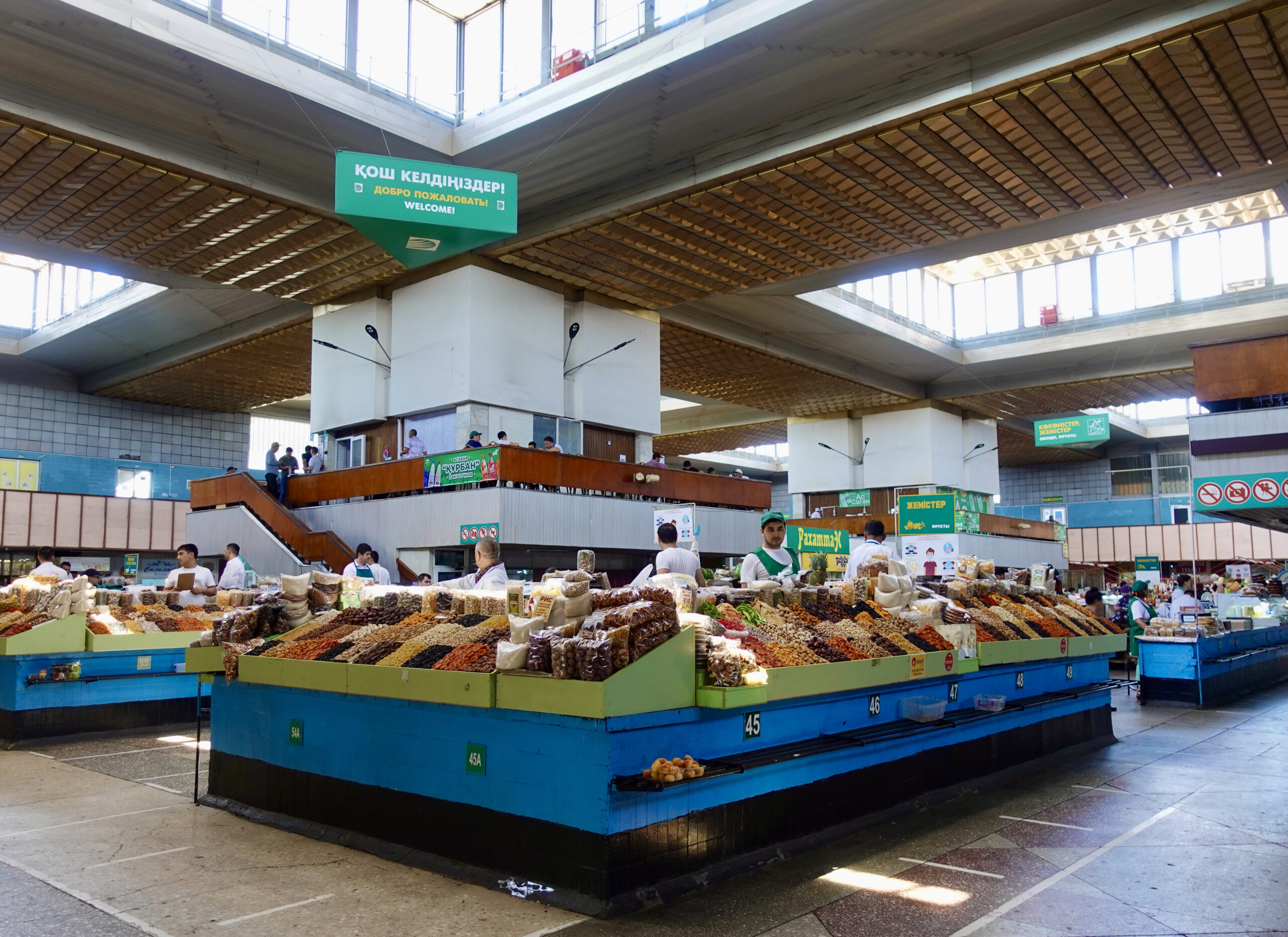
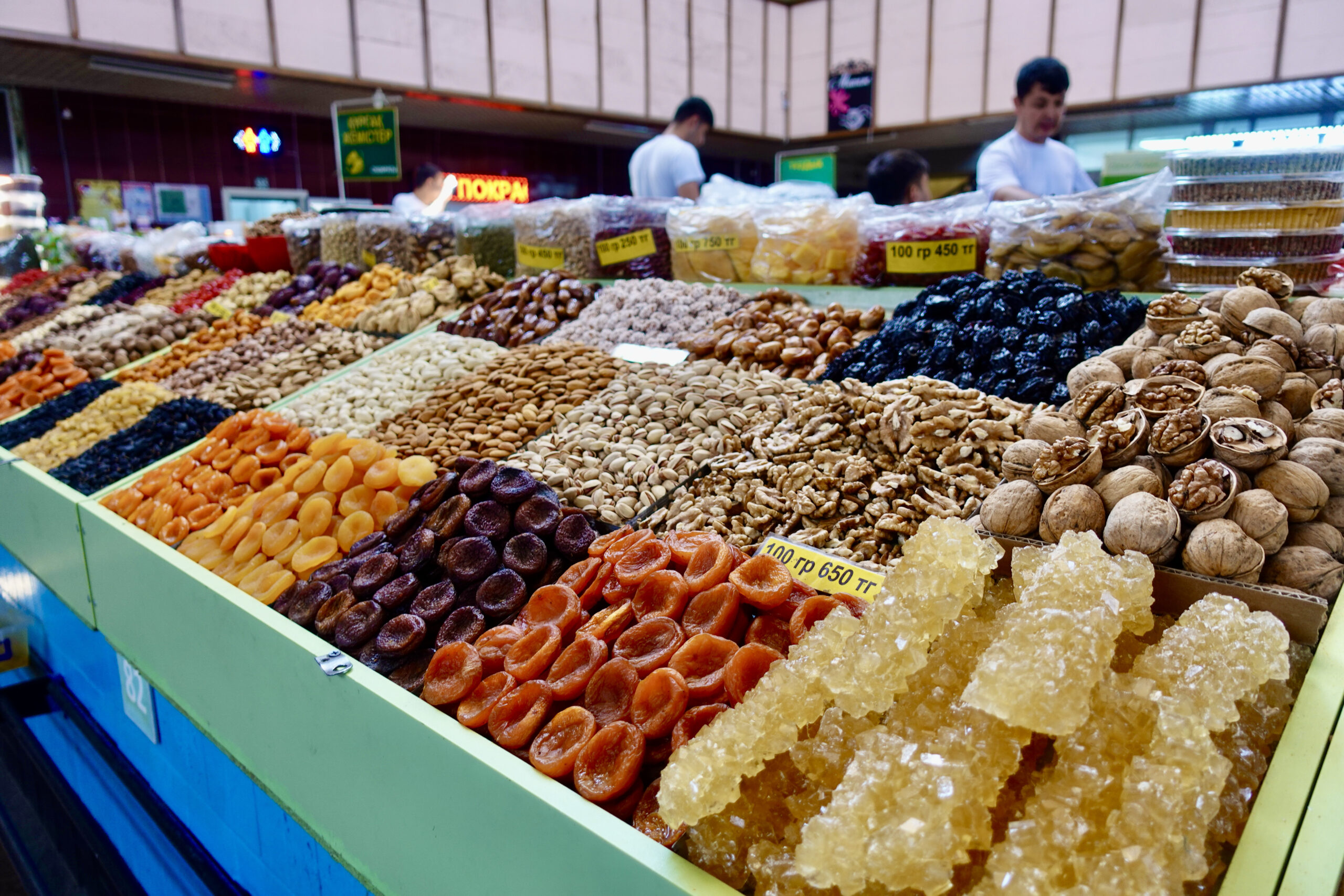
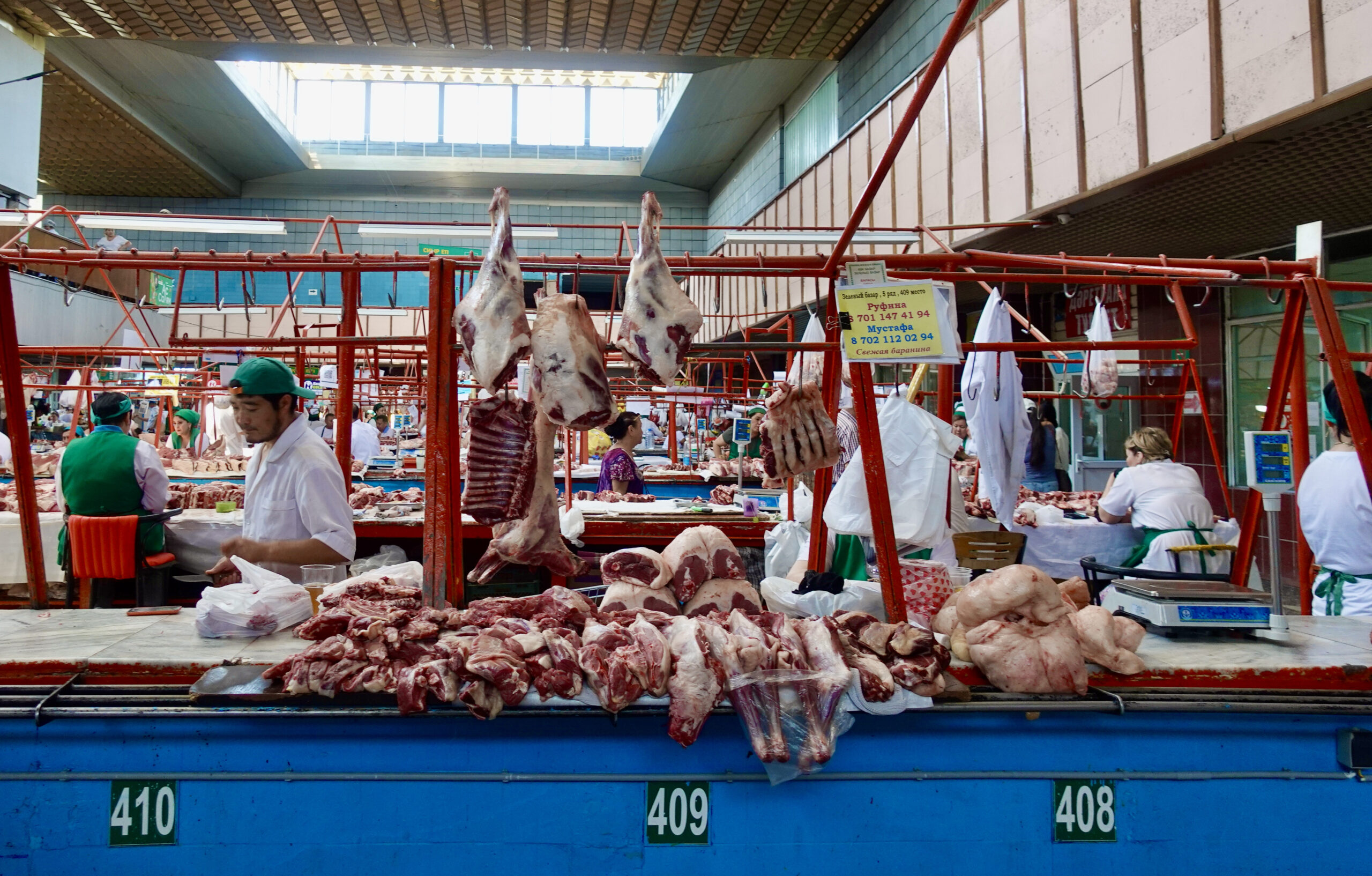
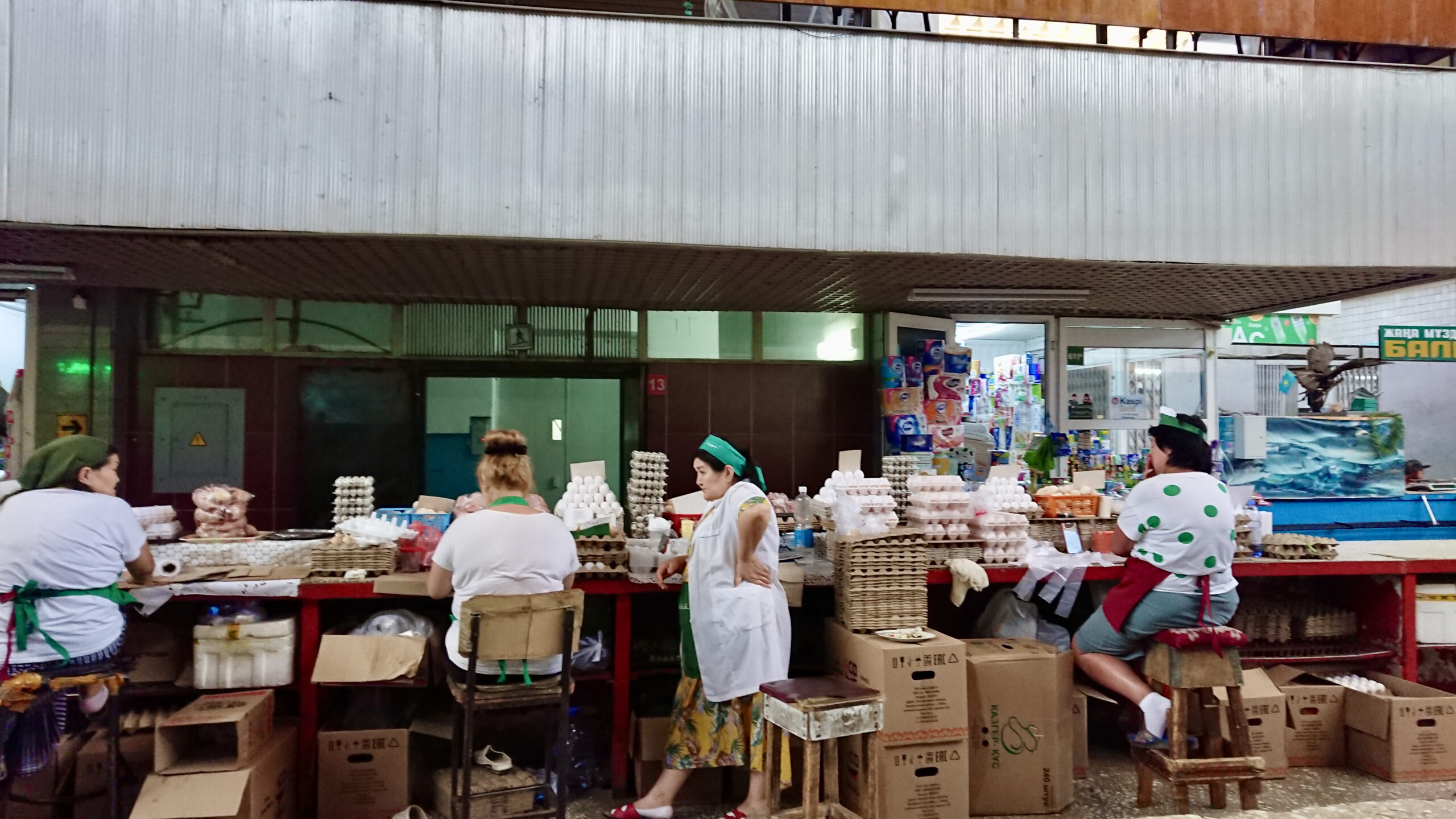

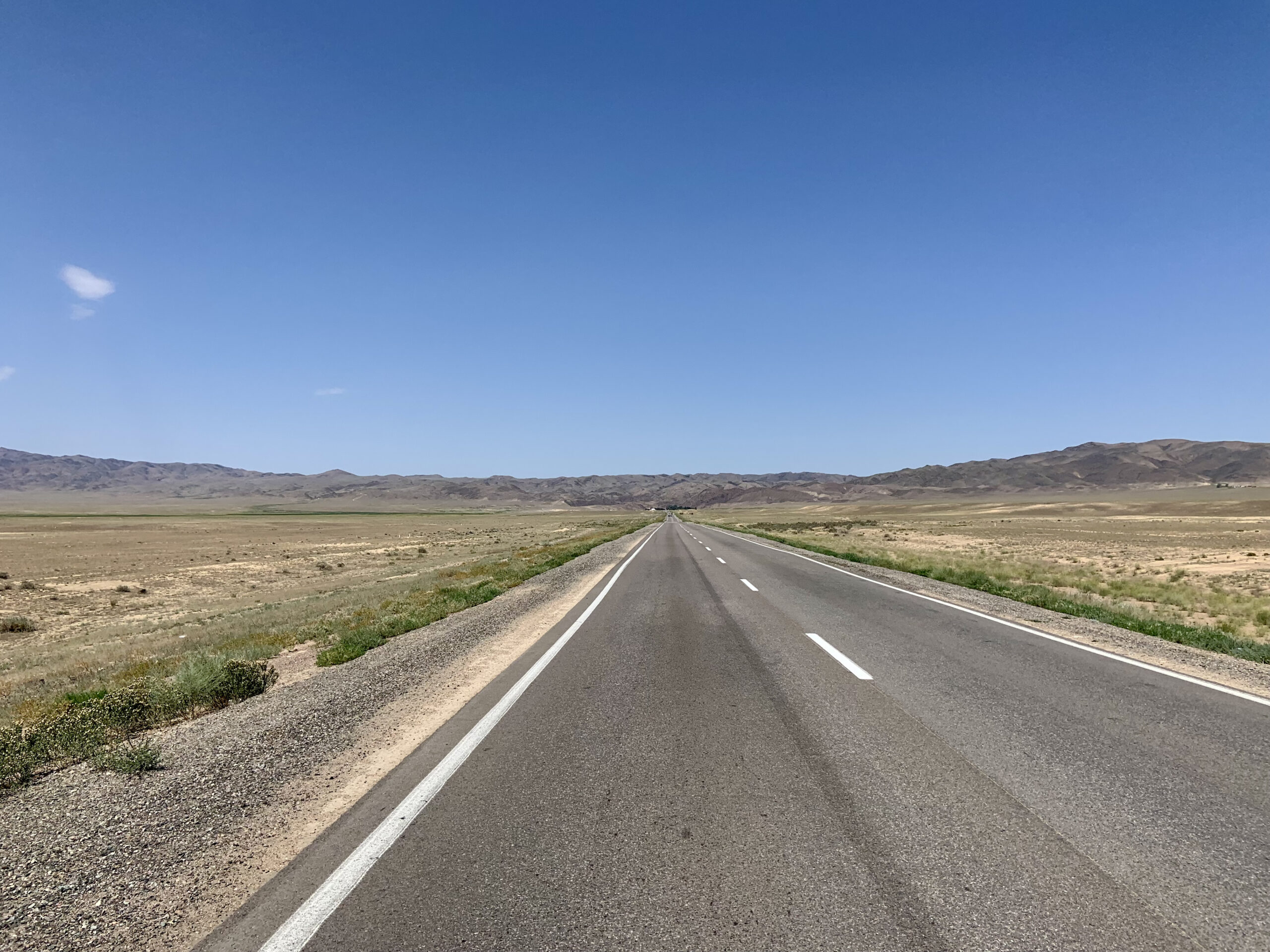

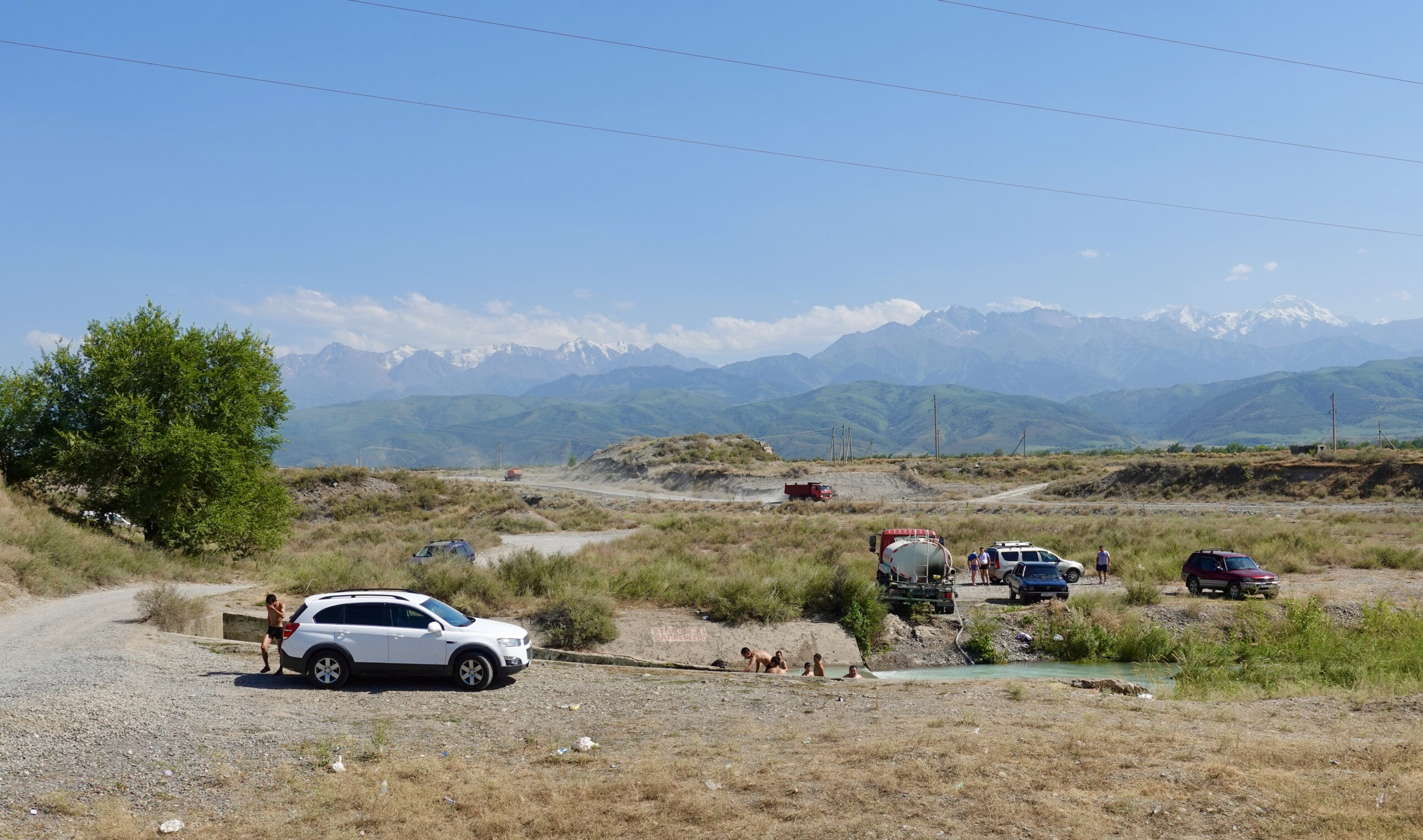
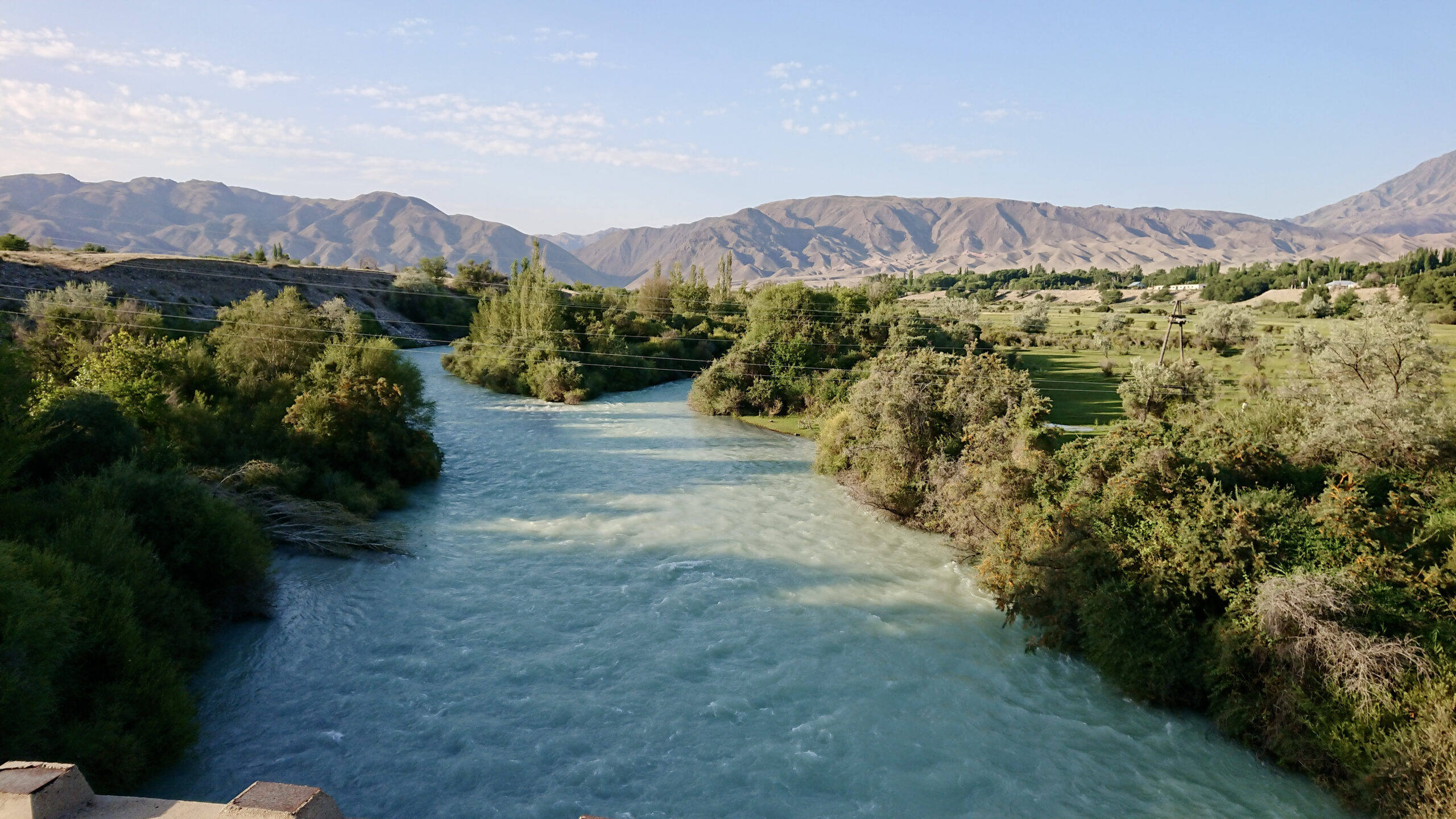
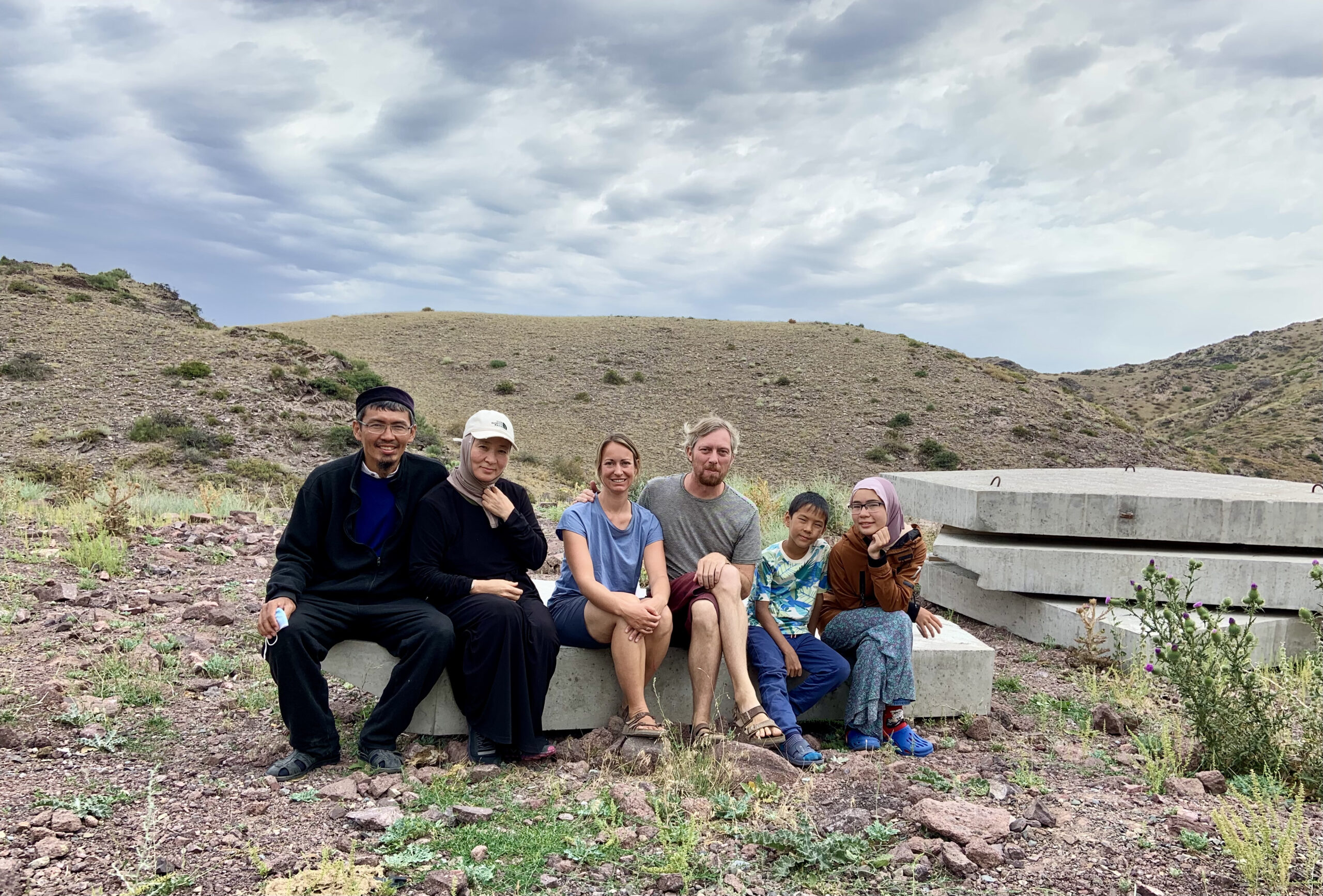
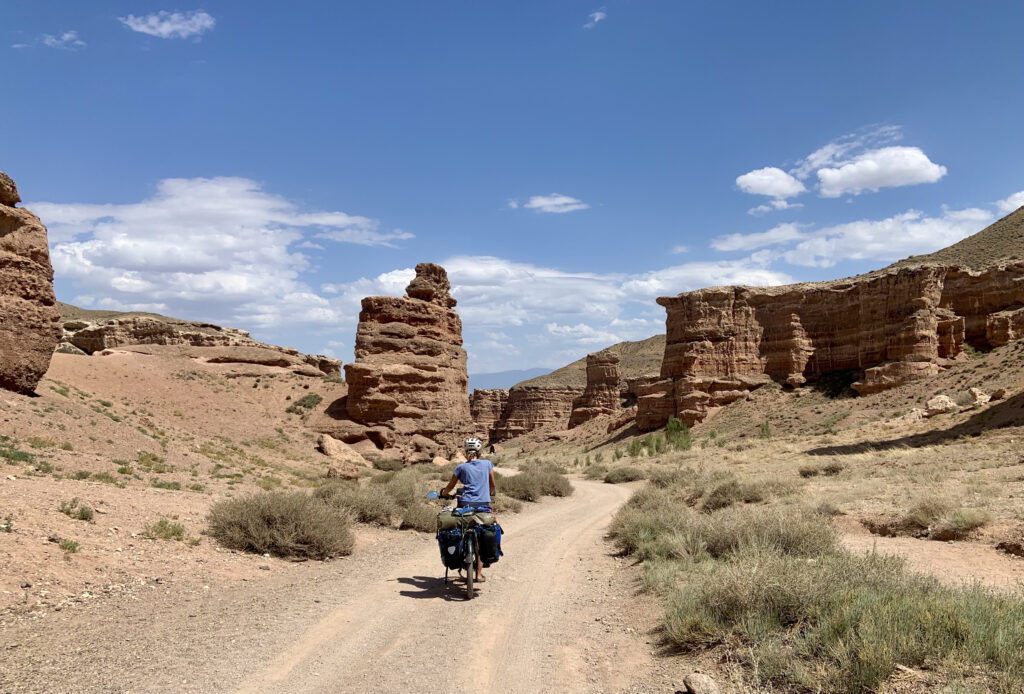
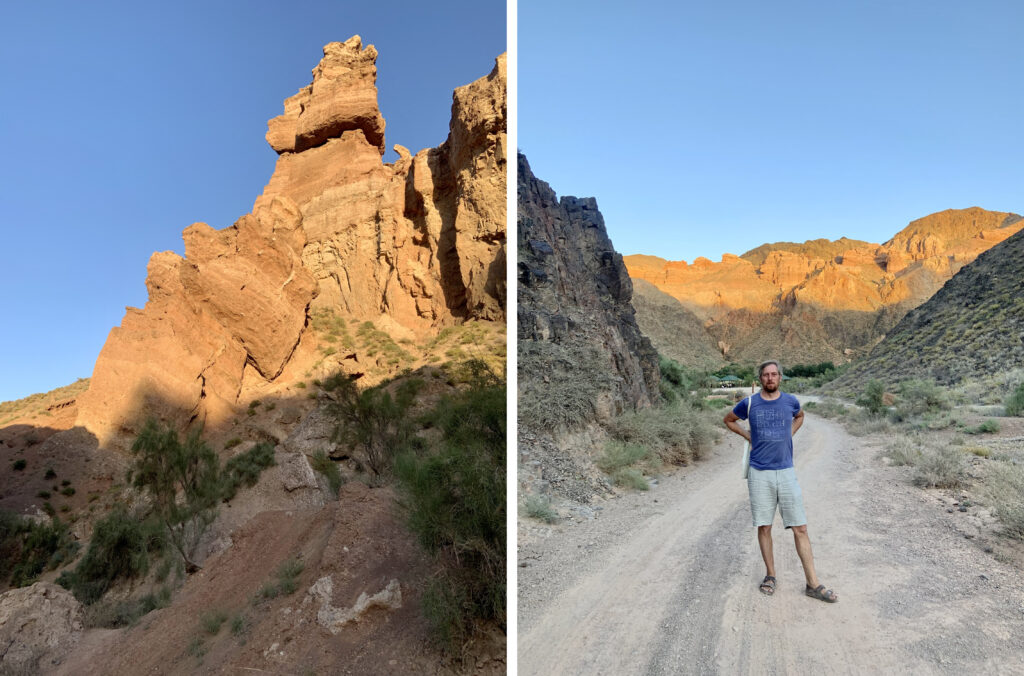
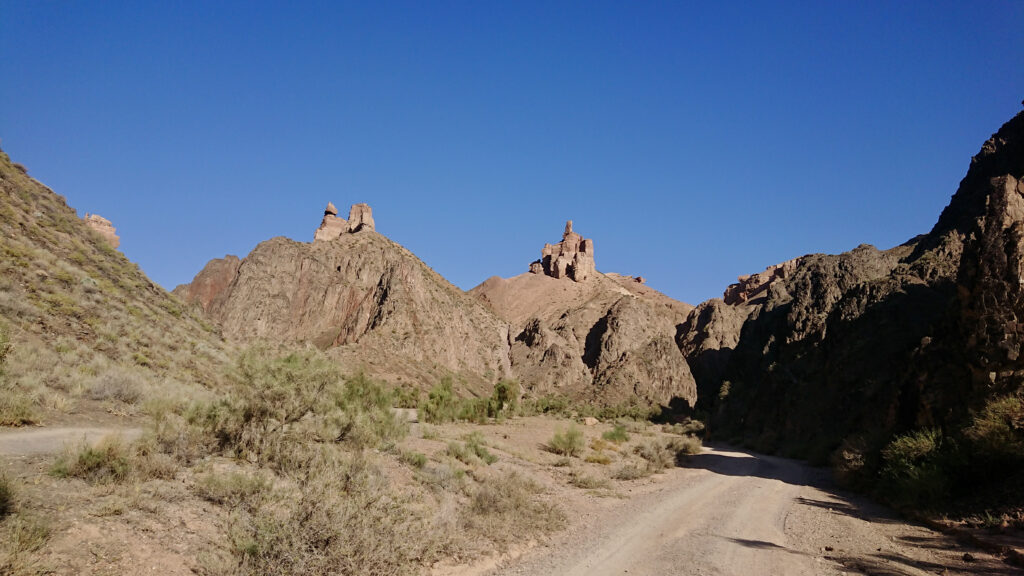

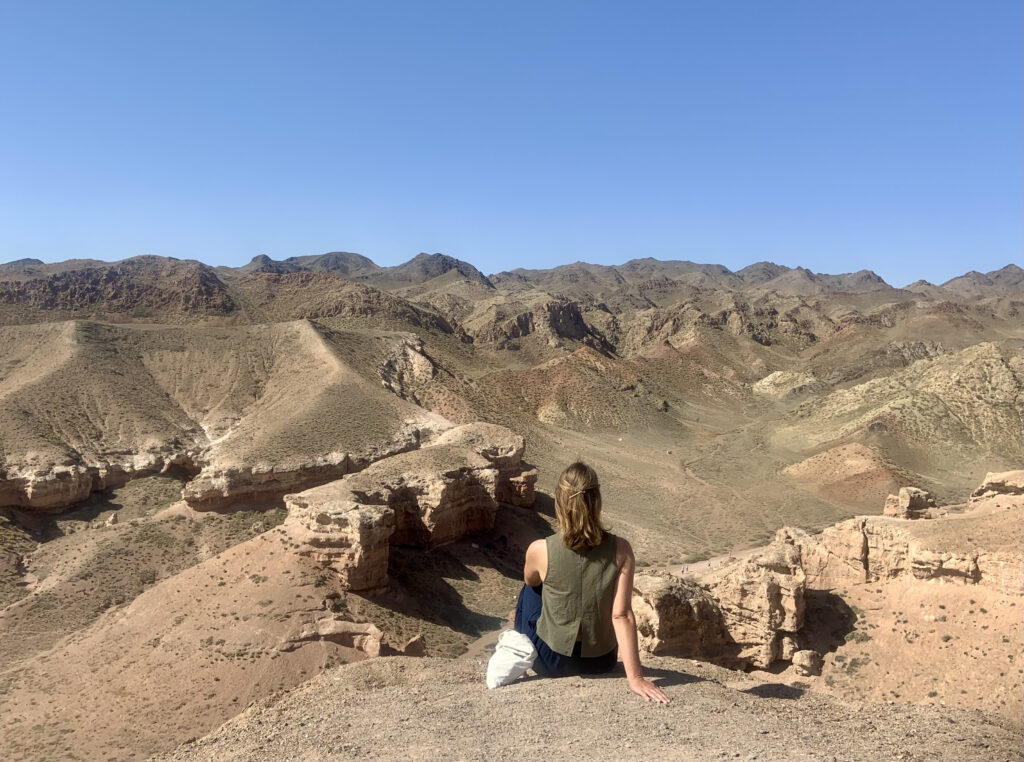

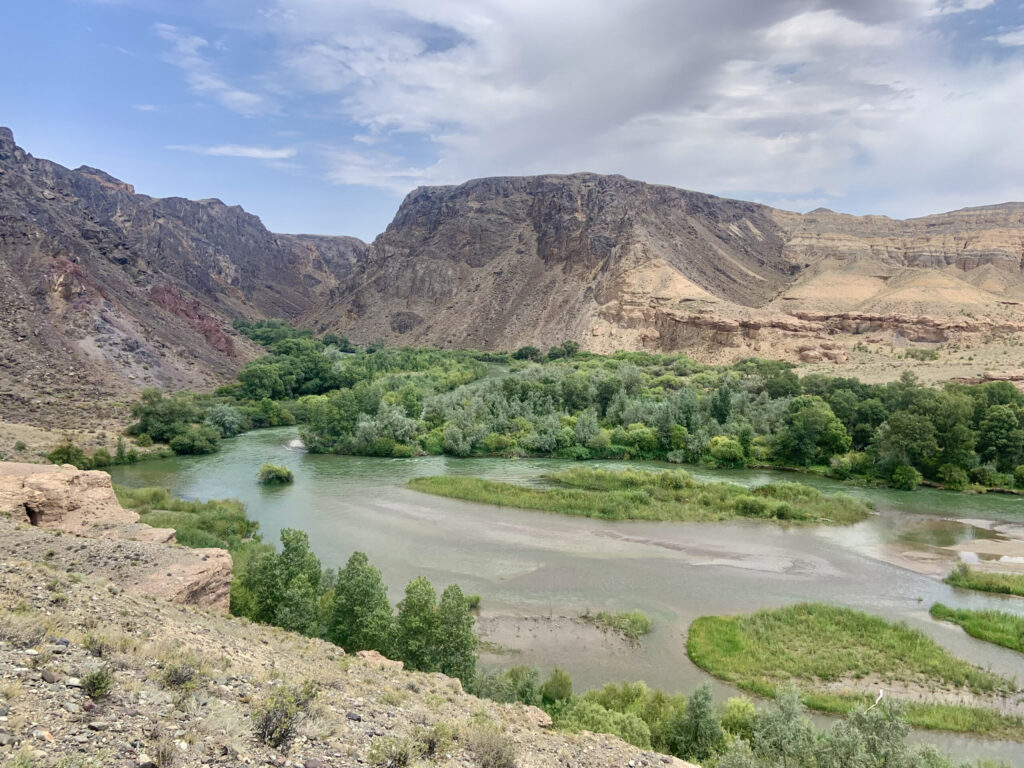
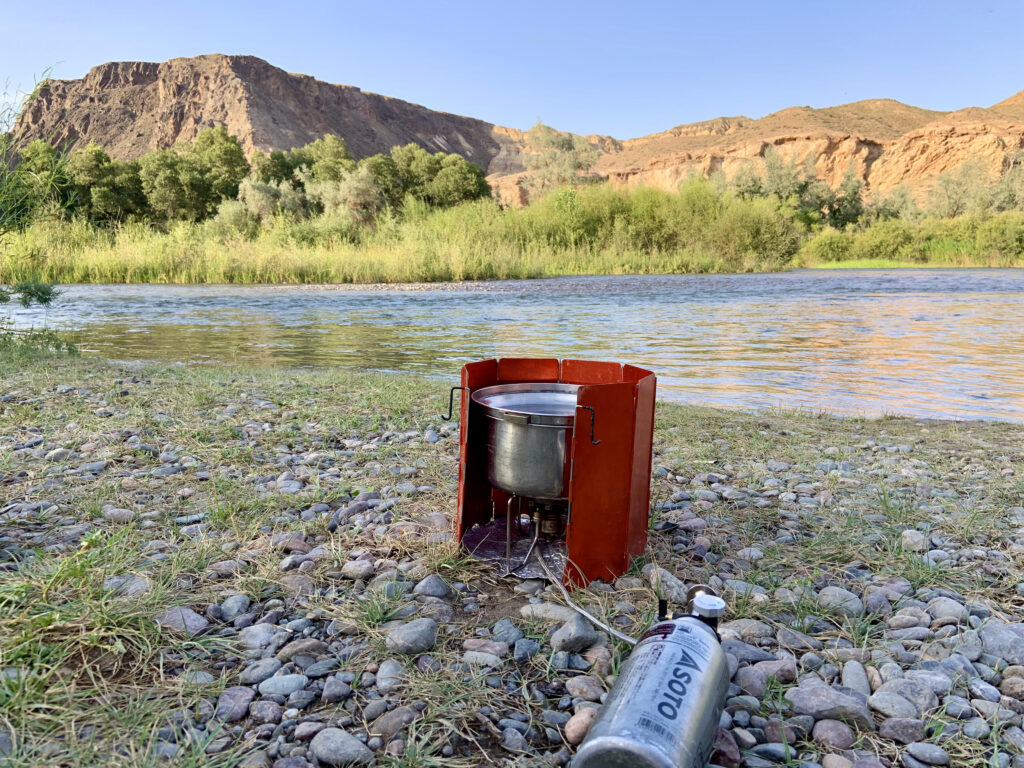
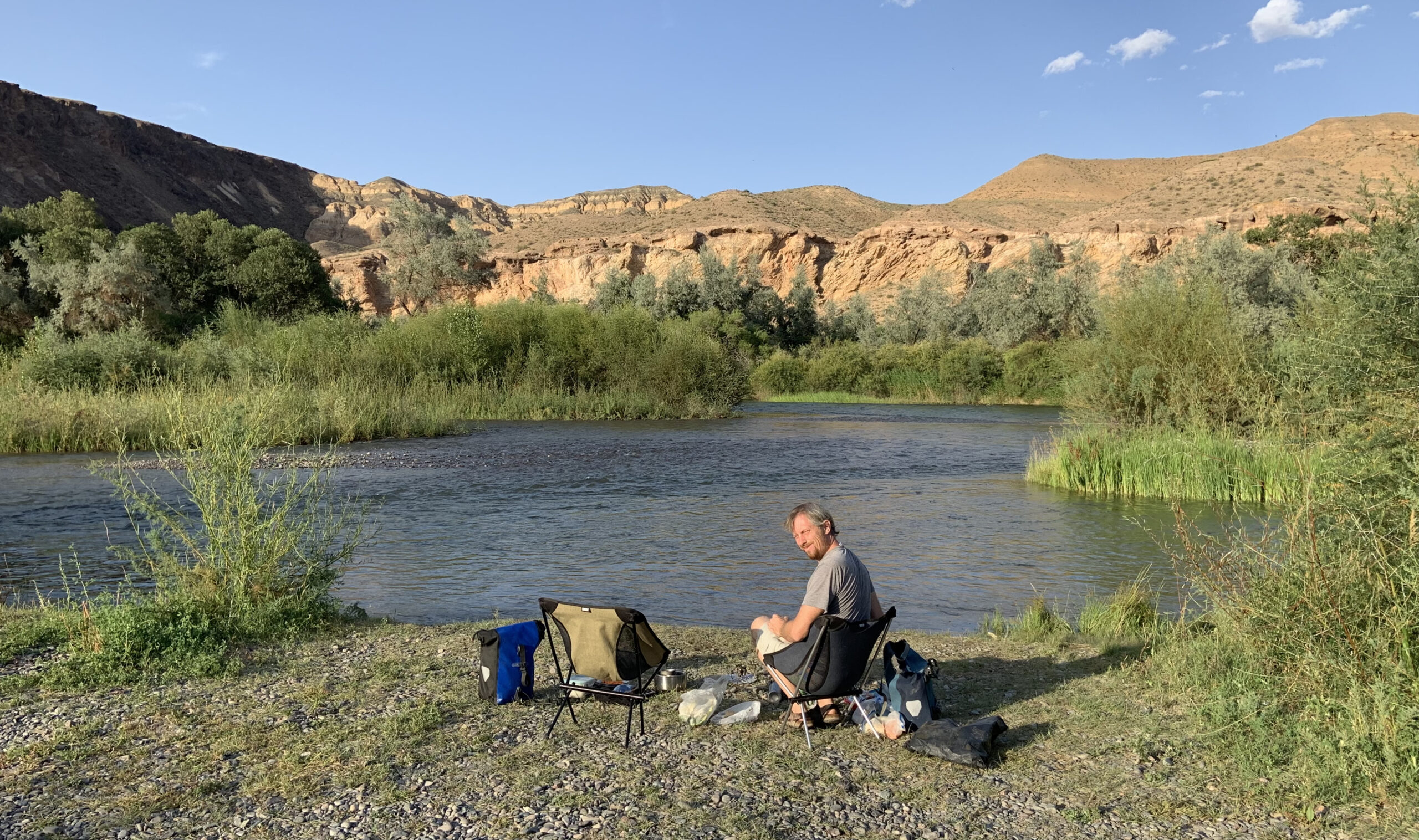
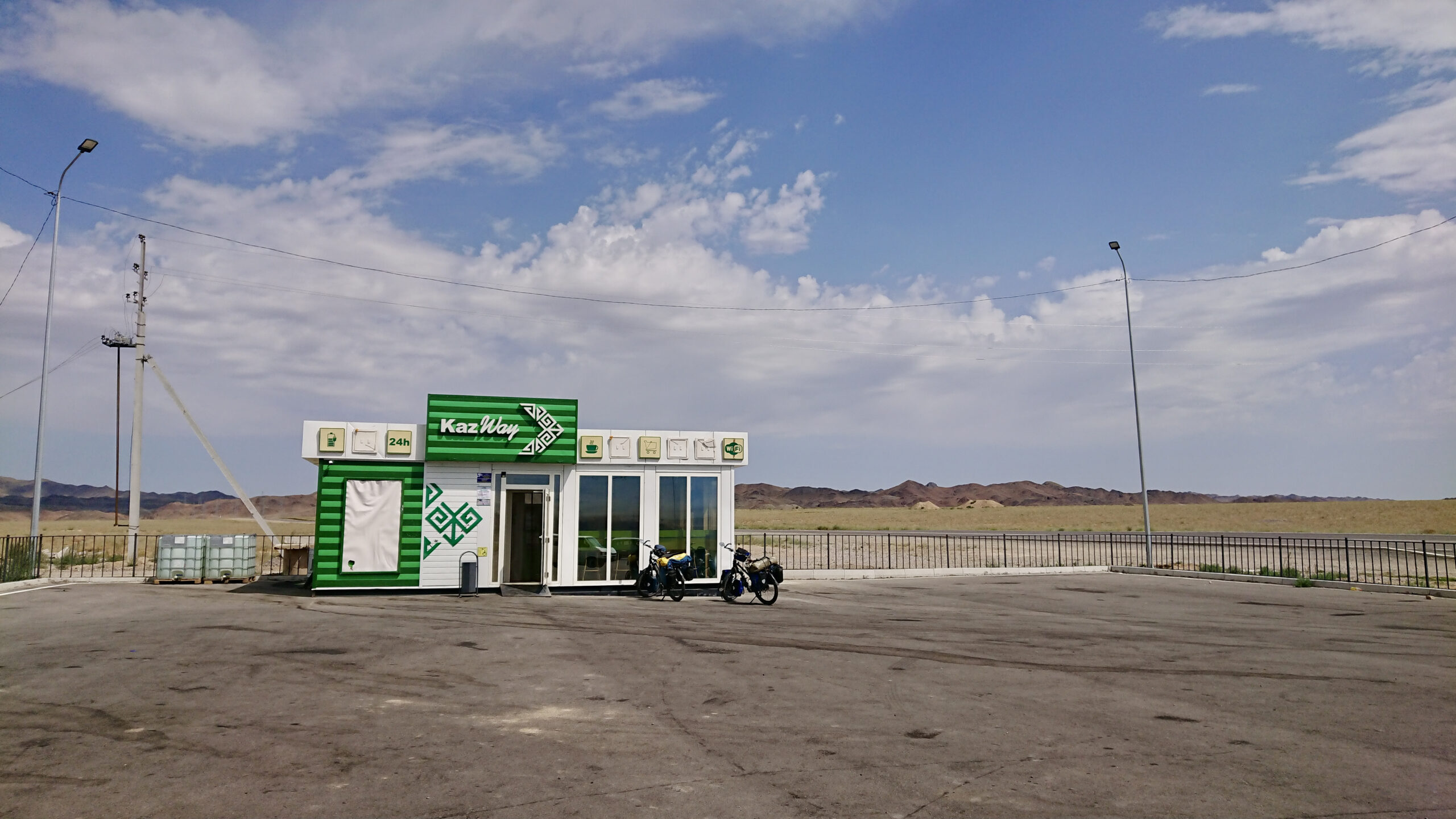
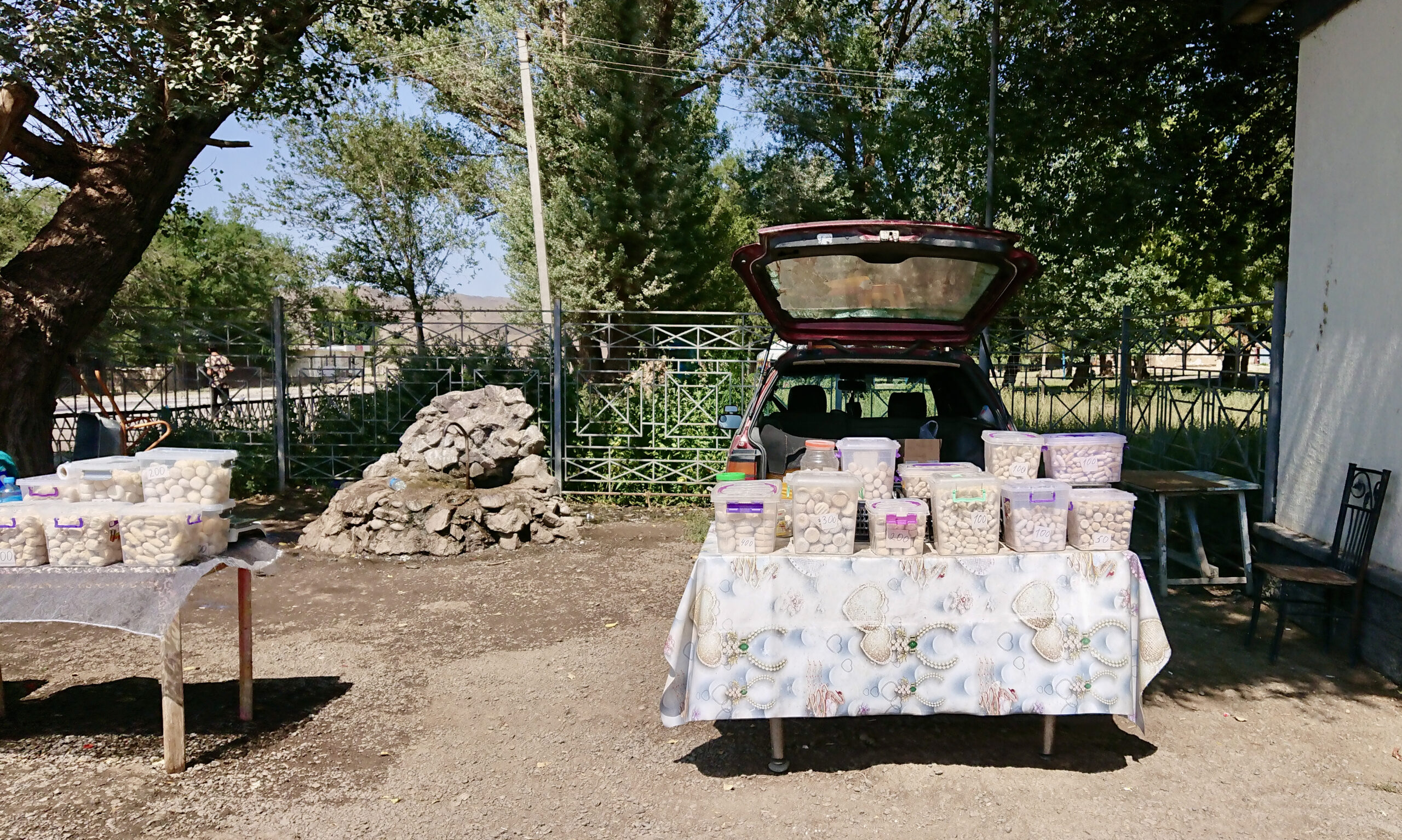
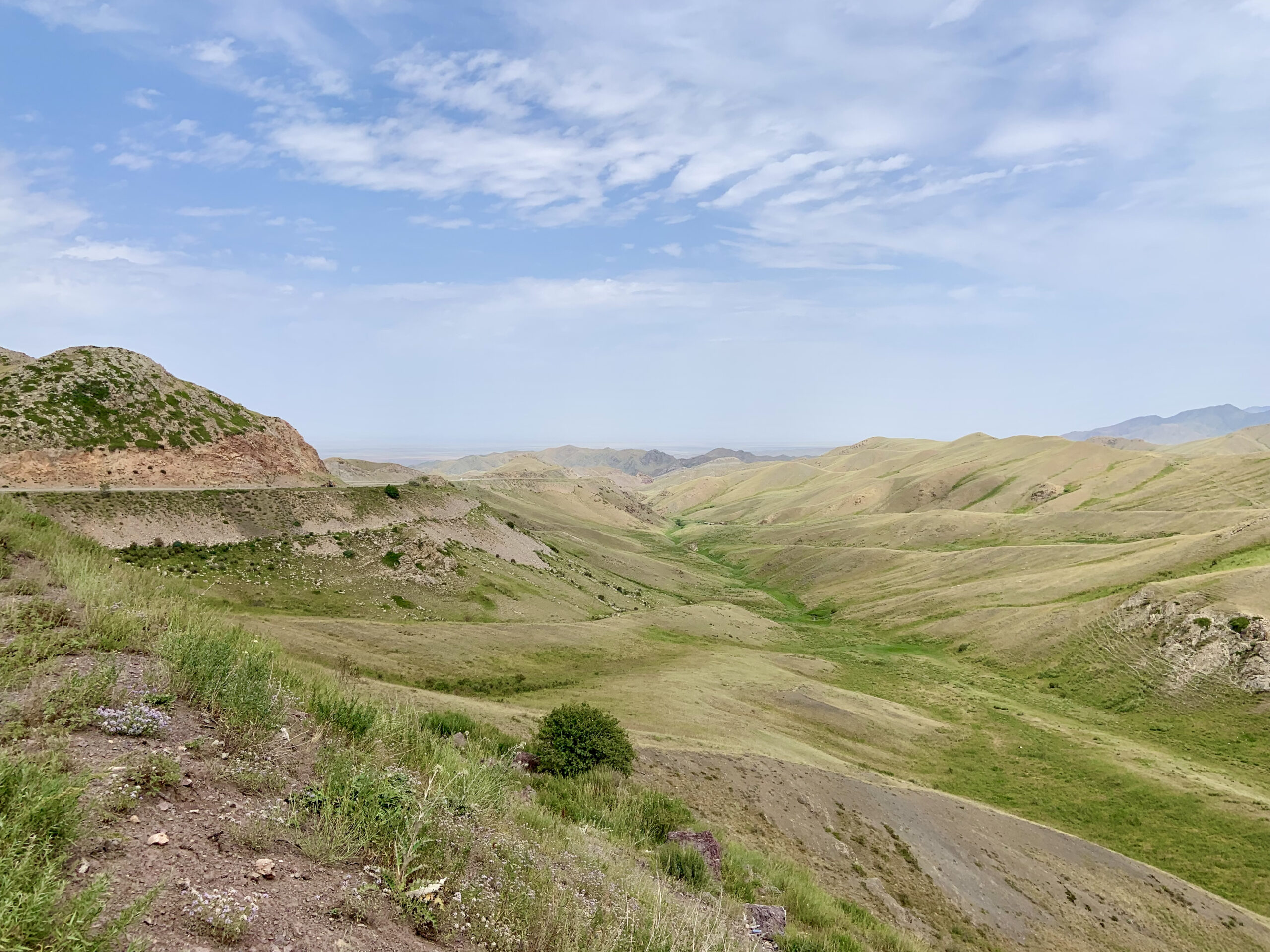
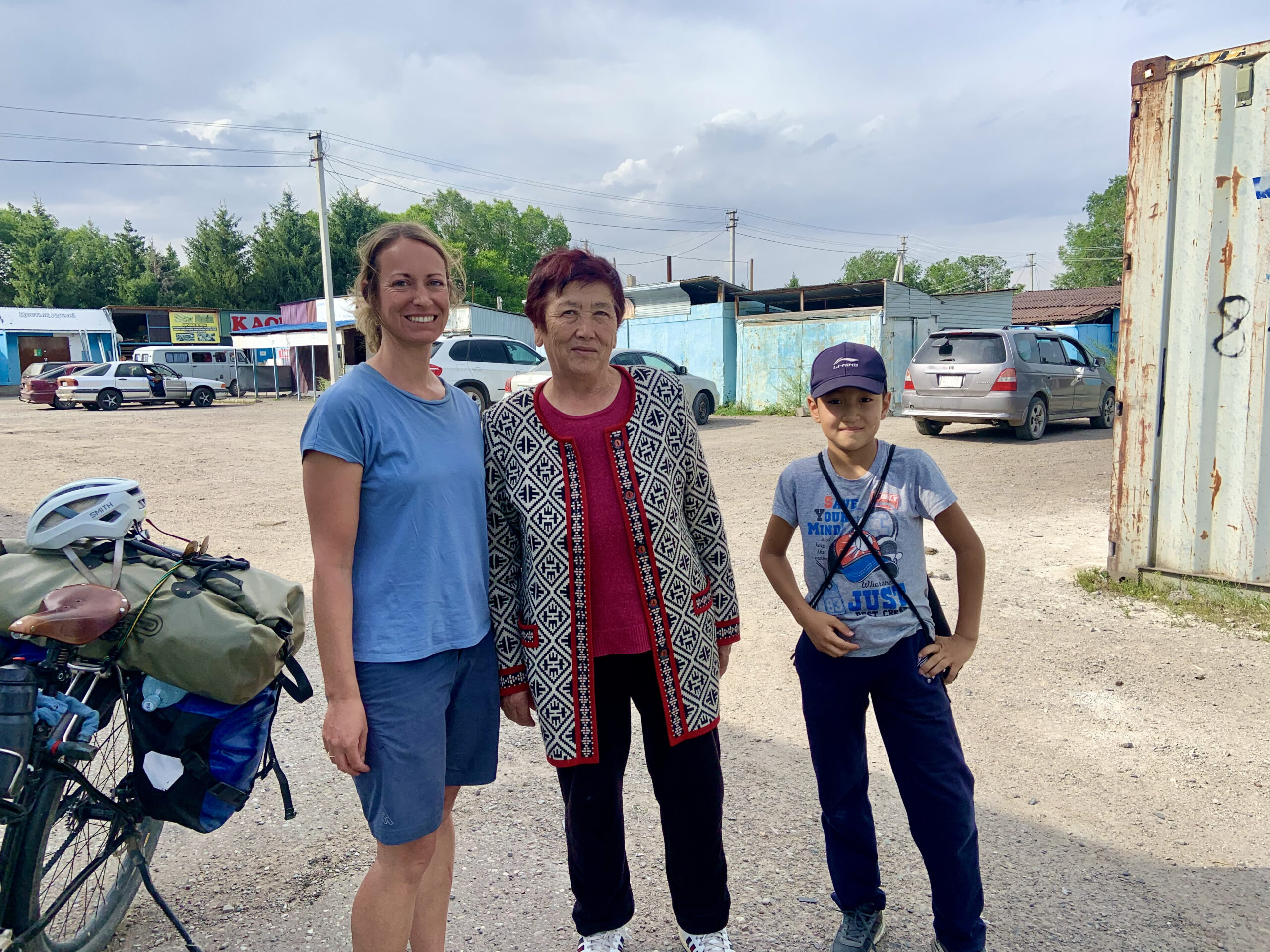
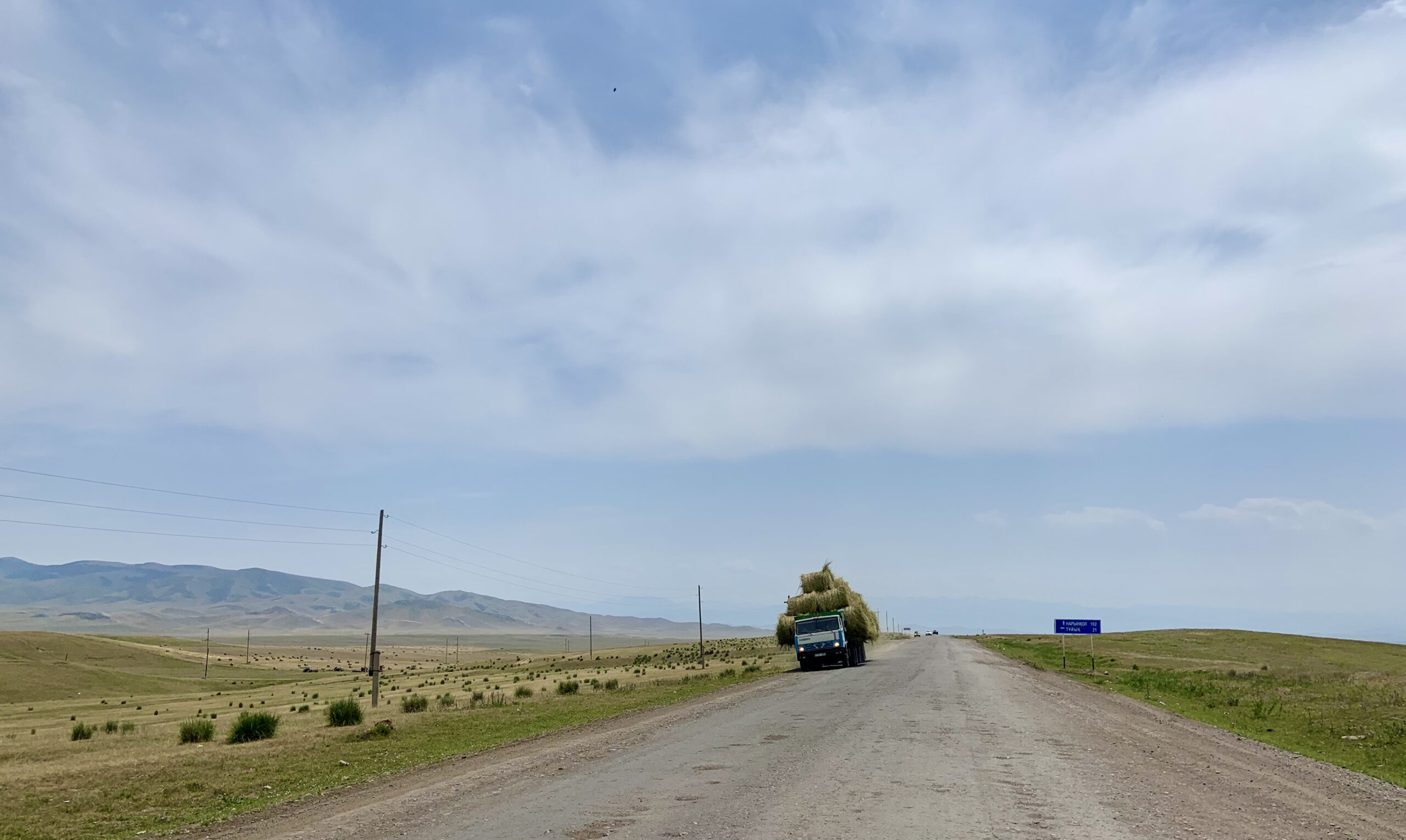
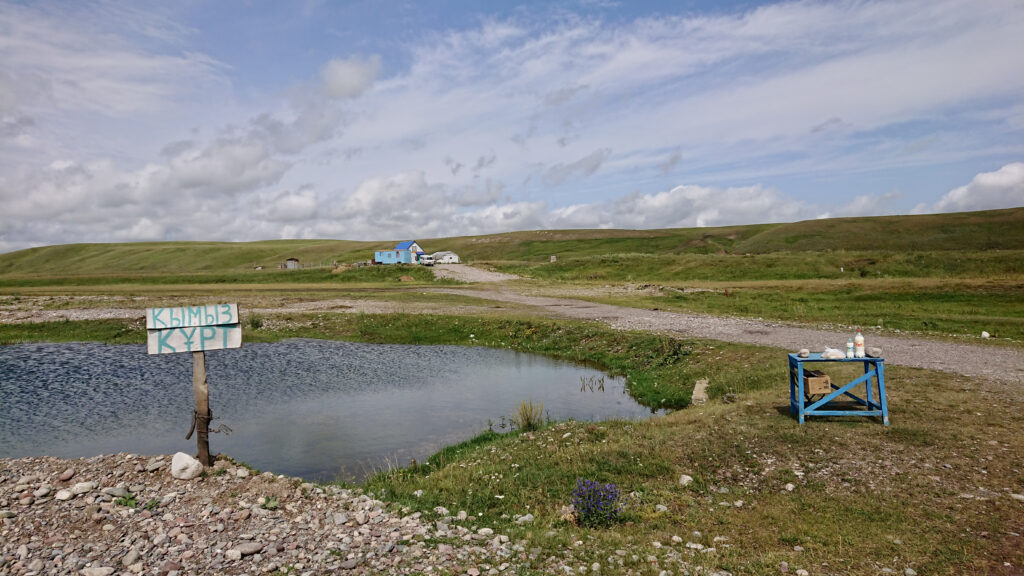
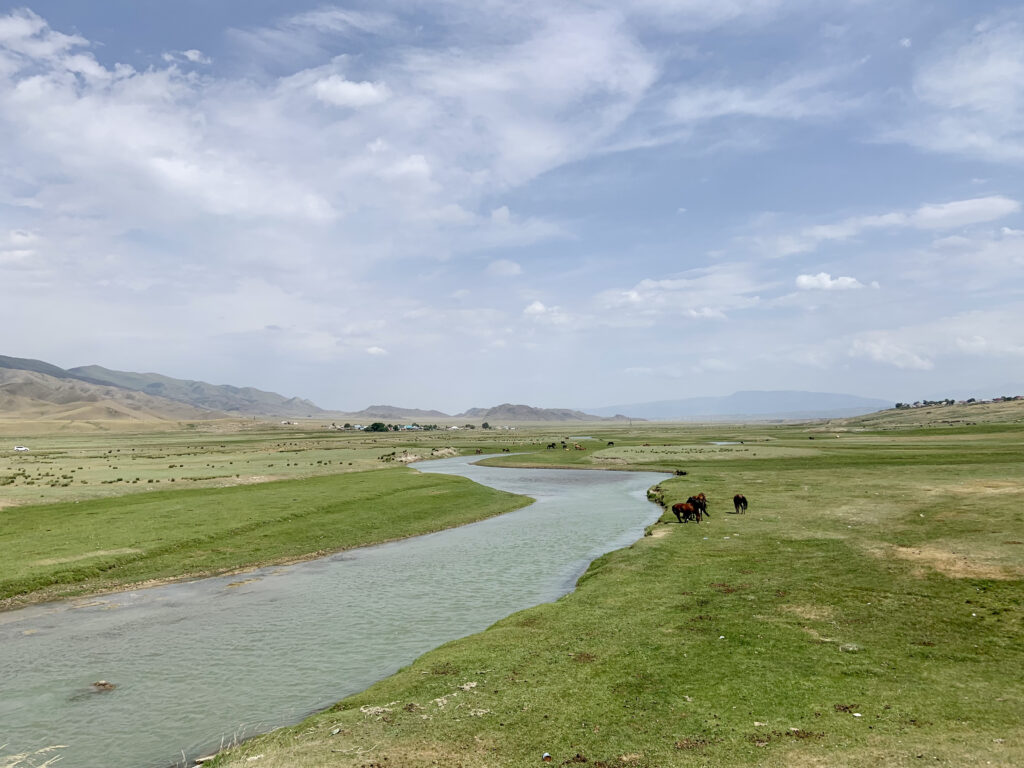
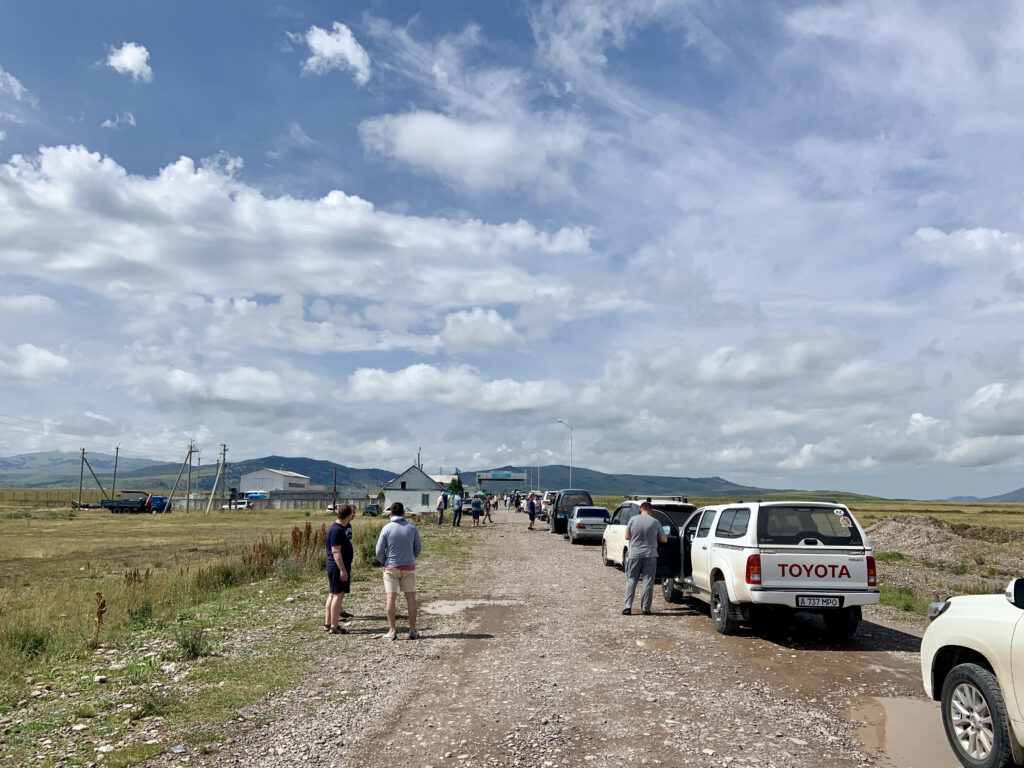
Leave a Reply